The Dominican Republic is home to a diverse range of bird species, from small hummingbirds to colorful parrots.
This small Caribbean country is located in the Greater Antilles and is known for its lush tropical forests, where many of these birds make their home.
From the majestic national bird, the Palmchat, to the tiny hummingbird, the Dominican Republic is a paradise for birdwatchers.
With a variety of habitats and a mild climate, these birds thrive in the Dominican Republic and provide a unique experience for birdwatchers of all levels.
1. Broad-Billed Tody
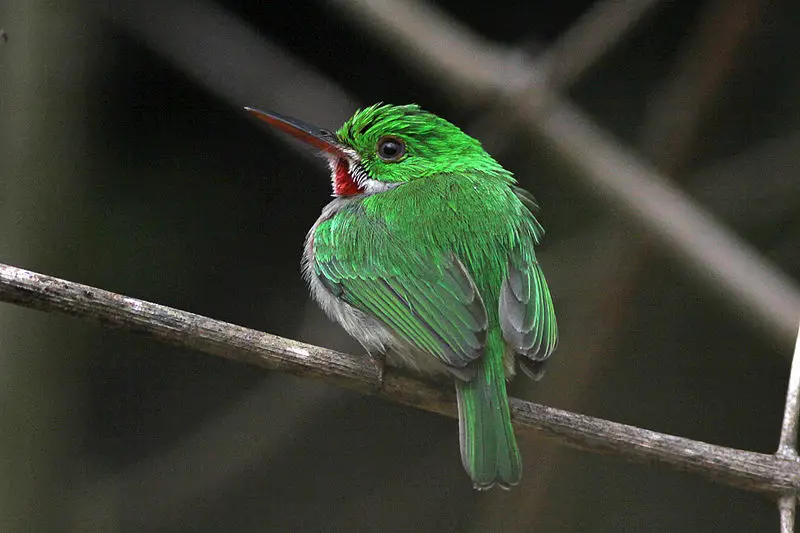
The Broad-billed Tody is a small, brightly colored bird native to Hispaniola. It has green feathers with pink flanks and red throats, making it quite the sight.
These birds prefer drier habitats such as low-lying shrubs or open woodland areas rather than wet rainforests.
Insects are their main source of food as they actively hunt for them in vegetation close to ground level.
Their conservation status is currently Least Concern due to its wide range and adaptability.
However, ongoing habitat loss through deforestation could put this species at risk if not addressed soon enough by the local government authorities.
Scientific classification:
| Kingdom | Animalia |
| Phylum | Chordata |
| Class | Aves |
| Order | Coraciiformes |
| Family | Todidae |
| Genus | Todus |
| Species | T. subulatus |
Also Featured In: Birds That You’ll Find in Hispaniola,
2. Hispaniolan Woodpecker
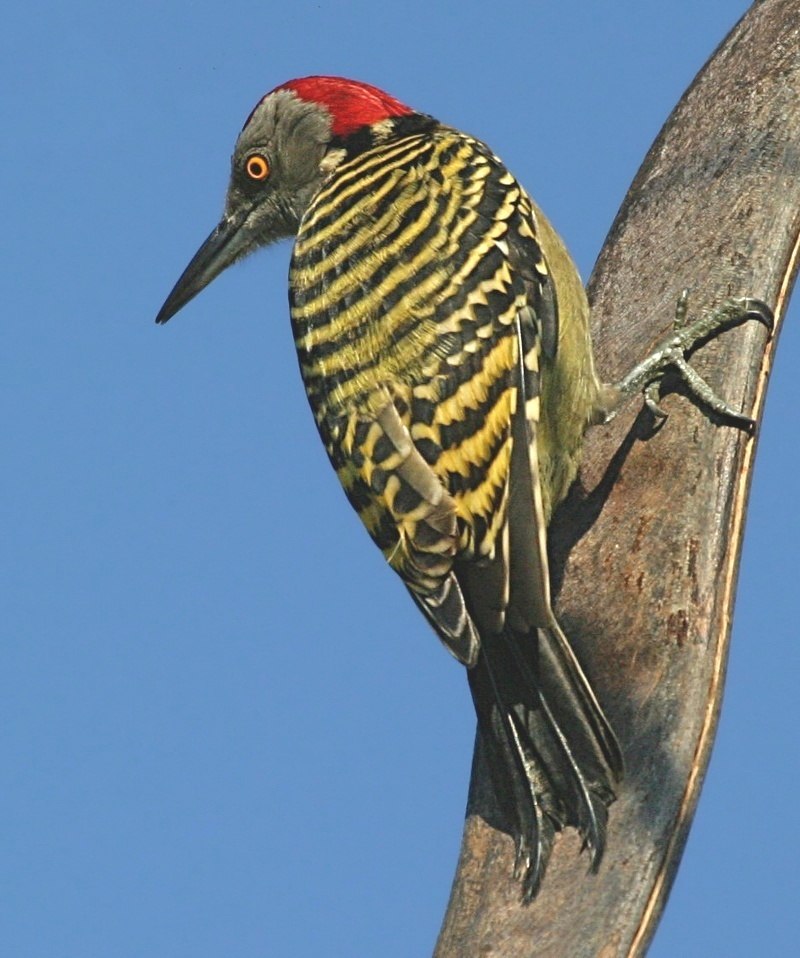
The Hispaniolan woodpecker is a beautiful bird endemic to the Caribbean island of Hispaniola. It has gold and black barred feathers, with males having an added red crown and nape.
The male also has a longer beak than the female, with its upper neck being white in coloration.
This medium-sized woodpecker grows up to 22 – 28 cm long and can often be seen pecking away at tree bark or logs while looking for food such as insects larvae, spiders, lizards and other small animals.
They mainly inhabit broadleaf forests but can also sometimes be found near plantations or secondary growth areas too.
With their distinctive calls heard throughout these habitats during mating season it’s easy to spot them amongst any greenery that you may come across on this lovely island.
Scientific classification:
| Kingdom | Animalia |
| Phylum | Chordata |
| Class | Aves |
| Order | Piciformes |
| Family | Picidae |
| Genus | Melanerpes |
| Species | M. striatus |
3. Hispaniolan Trogon
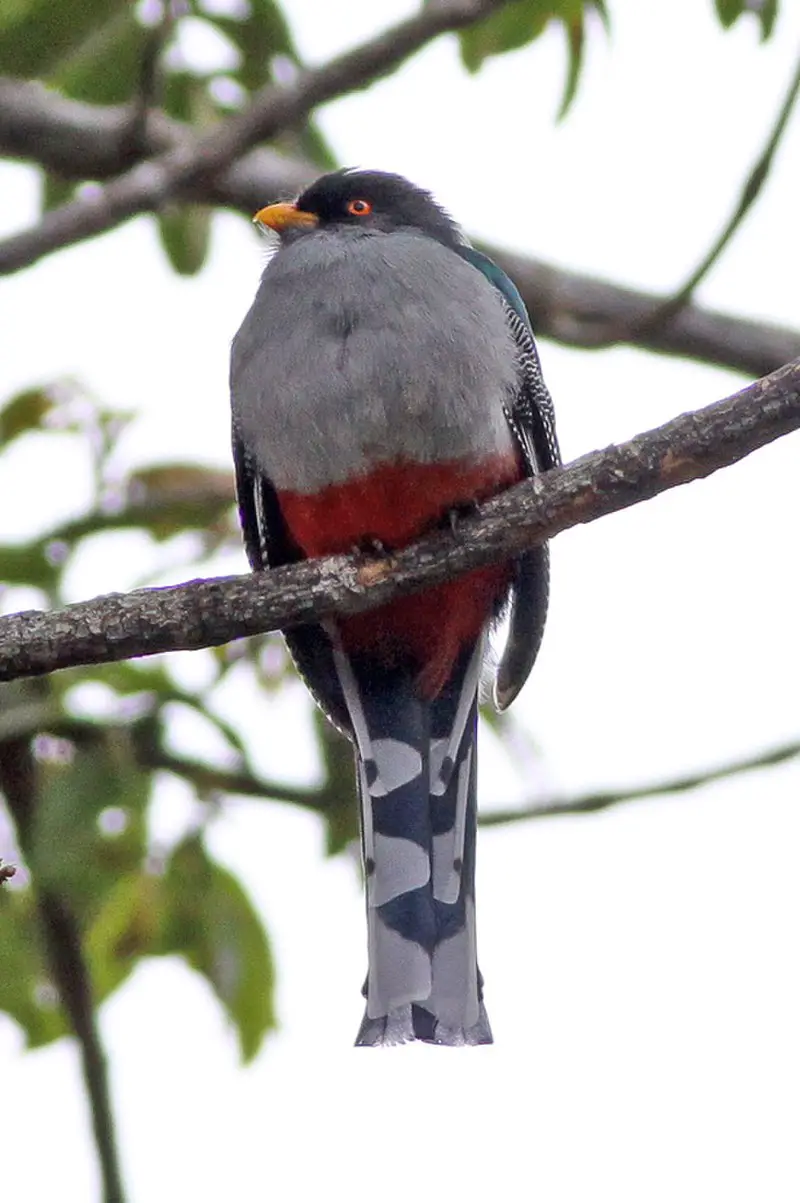
The Hispaniolan trogon is a stunning bird endemic to Haiti and the Dominican Republic in the Caribbean. It has brilliant colours, most notably its rose-coloured back, deep blue face, bright yellow belly and red tail feathers.
As one of only two species of trogons found in the Caribbean region it is fittingly recognised as national bird of Haiti.
Its distinct features include long graduated tails, small feet and short thick bills which adds to their beauty.
The feeding habits are mainly on fruits like figs but also insects such as beetles and moths too.
They build nests in hollow tree cavities or holes made by woodpeckers making them quite secretive birds that can be hard to spot within dense forests they inhabit with relative ease due to their agility flying between trees at high speeds.
Scientific classification:
| Kingdom | Animalia |
| Phylum | Chordata |
| Class | Aves |
| Order | Trogoniformes |
| Family | Trogonidae |
| Genus | Priotelus |
| Species | P. roseigaster |
4. Hispaniolan Emerald
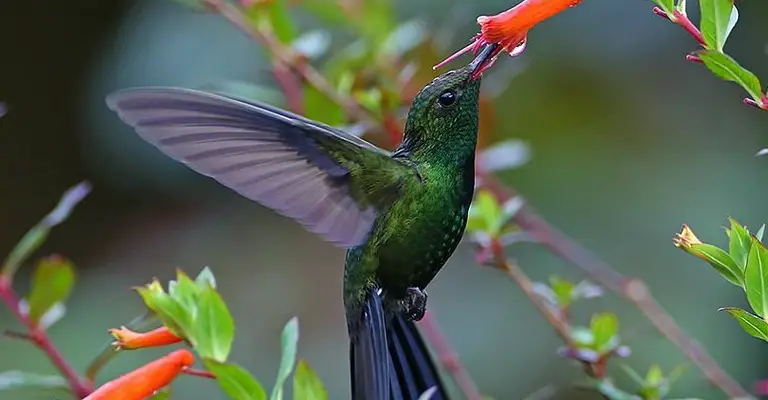
The Hispaniolan emerald is a beautiful species of hummingbird that can only be found in the Caribbean island of Hispaniola.
This stunning bird, which belongs to the Trochilinae subfamily and “emeralds” tribe, features striking green feathers with vibrant orange highlights on its wings and tail.
It was formerly placed within the genus Chlorostilbon but has since been reclassified due to new molecular studies published in 2014 and 2017.
Sadly, this magnificent creature is currently endangered as its native habitat continues to shrink from human development activities such as logging and mining.
Conservation efforts are needed now more than ever if we hope for future generations to enjoy these amazing creatures.
Scientific classification:
| Kingdom | Animalia |
| Phylum | Chordata |
| Class | Aves |
| Order | Apodiformes |
| Family | Trochilidae |
| Genus | Riccordia |
| Species | R. swainsonii |
5. Hispaniolan Parakeet
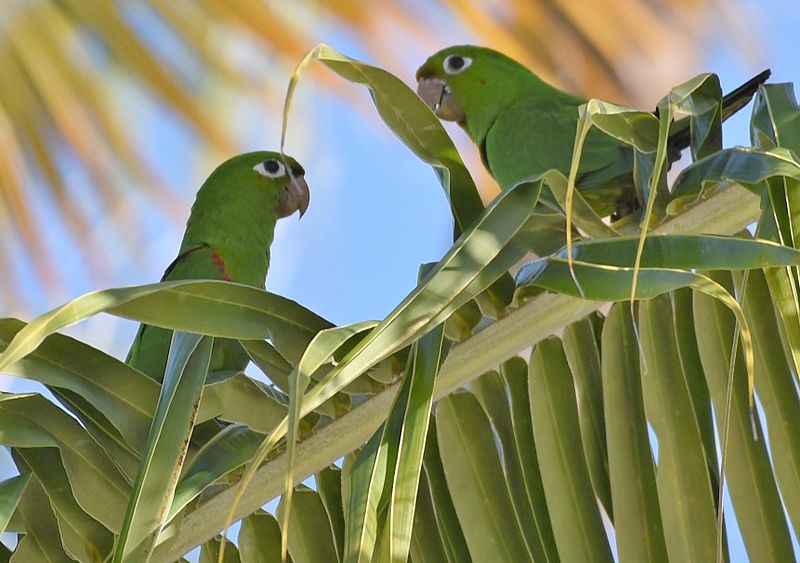
The Hispaniolan parakeet is a species of parrot endemic to the island of Hispaniola. It has green feathers, with yellow patches around its face and wings.
These birds are social creatures that form large flocks in open areas such as pastures or agricultural fields when foraging for food.
They feed mainly on fruits, nuts and insects but will also take advantage of bird seed from backyard feeding stations.
Feral populations have been spotted in Guadeloupe, Puerto Rico and even Miami – where they sometimes associate with canary-winged parakeets.
Despite their popularity among pet owners due to their intelligence and playfulness, these birds remain an endangered species due to habitat destruction caused by deforestation and hunting activities.
Scientific classification:
| Kingdom | Animalia |
| Phylum | Chordata |
| Class | Aves |
| Order | Psittaciformes |
| Family | Psittacidae |
| Genus | Psittacara |
| Species | P. chloropterus |
6. Tody
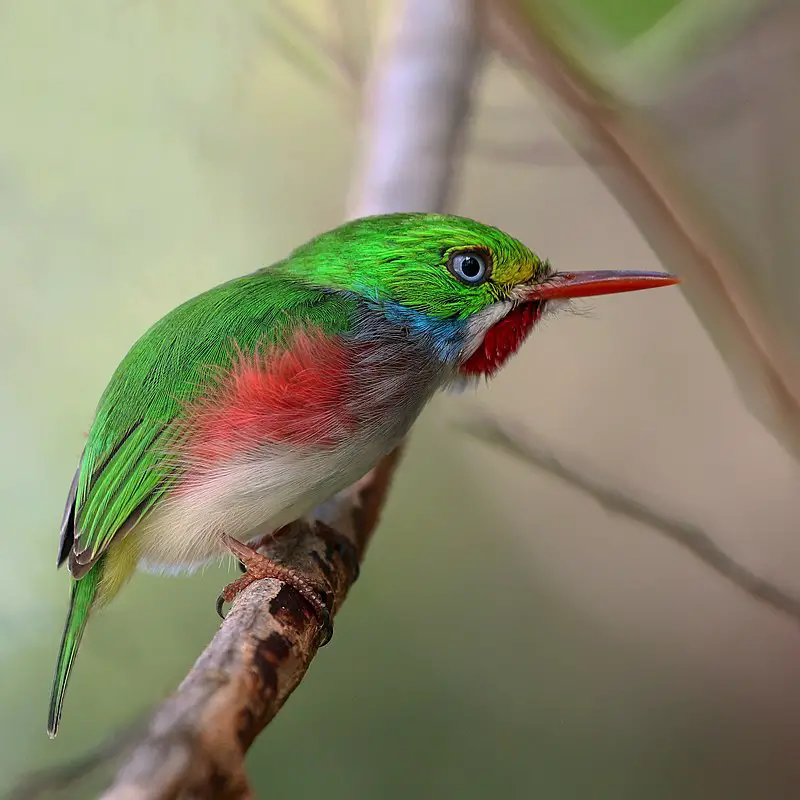
Tody birds are small yet stunningly beautiful Caribbean birds that belong to the Coraciiformes order, which also includes kingfishers, bee-eaters and rollers.
They make up the family Todidae with one living genus – Todus – and a fossilized genus called Palaeotodus.
The first classification of these birds was done by Mathurin Jacques Brisson in 1760 who placed them in their own distinct genus; they were originally part of Alcedo (the kingfisher).
These tiny beauties have bright green bodies with white bellies, black heads capped with red or orange feathers depending on species, short tails and yellow legs.
They live mainly in forests but will sometimes venture out into open meadows where they can be seen hunting insects like most other hummingbirds do.
Scientific classification:
| Kingdom | Animalia |
| Phylum | Chordata |
| Class | Aves |
| Order | Coraciiformes |
| Family | Todidae Vigors, 1825 |
7. Ashy-Faced Owl
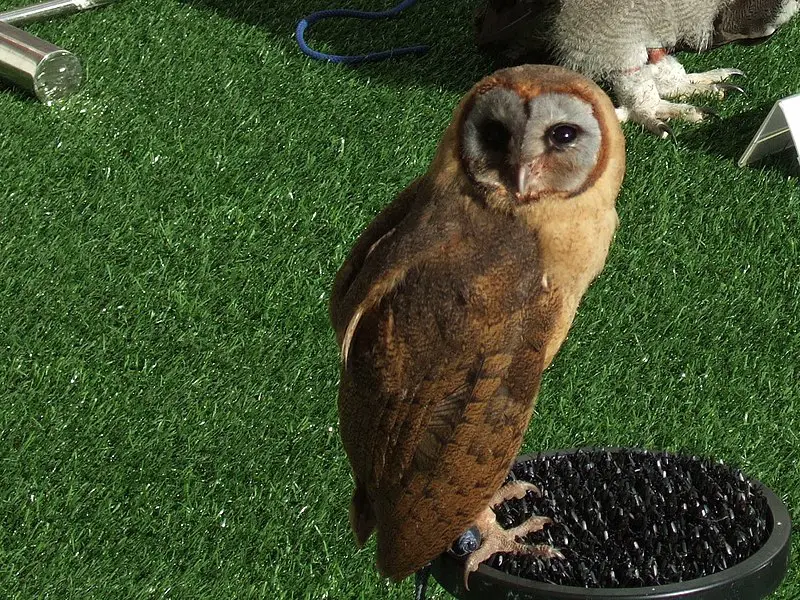
The Ashy-faced Owl is a species of owl found only on the Caribbean island of Hispaniola, split between Haiti and the Dominican Republic.
It has an ash grey face with white eyebrows above its yellow eyes, while its wings and tail are barred black and brown.
This bird prefers subtropical or tropical dry shrubland habitats as well as high altitude shrublands that have been heavily deforested.
Its diet consists mainly of small mammals such as mice and rats which it hunts at night by flying silently through open areas near their burrows.
The population of this species in recent years has decreased due to habitat destruction caused by human activities like logging, mining, agriculture expansion etc., making them vulnerable to extinction unless urgent conservation measures are taken soon.
Scientific classification:
| Kingdom | Animalia |
| Phylum | Chordata |
| Class | Aves |
| Order | Strigiformes |
| Family | Tytonidae |
| Genus | Tyto |
| Species | T. glaucops |
8. Hispaniolan Amazon
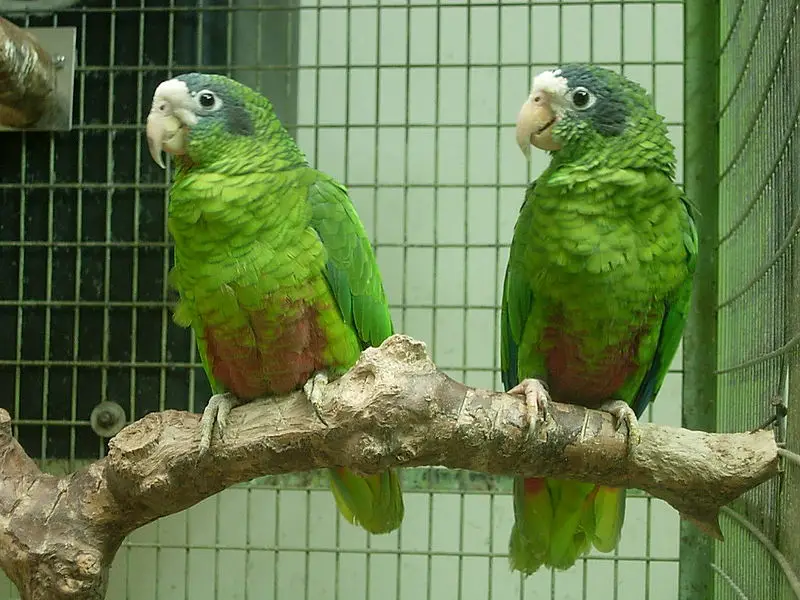
The Hispaniolan amazon is an exotic parrot species that is endemic to the island of Hispaniola. With a unique set of features such as white forehead, pale beak, white eye-ring and blue ear patch, this bird stands out from other amazons.
It has been introduced in Puerto Rico too. The cuca (as it’s colloquially called) loves flying around and making its presence felt with loud chirping sounds.
Its red belly makes it even more attractive to look at for avid bird watchers who can spot them easily in their habitats.
All in all, the Hispaniolan Amazon is a beautiful creature well worth admiring.
Scientific classification:
| Kingdom | Animalia |
| Phylum | Chordata |
| Class | Aves |
| Order | Psittaciformes |
| Family | Psittacidae |
| Genus | Amazona |
| Species | A. ventralis |
9. Western Chat-Tanager
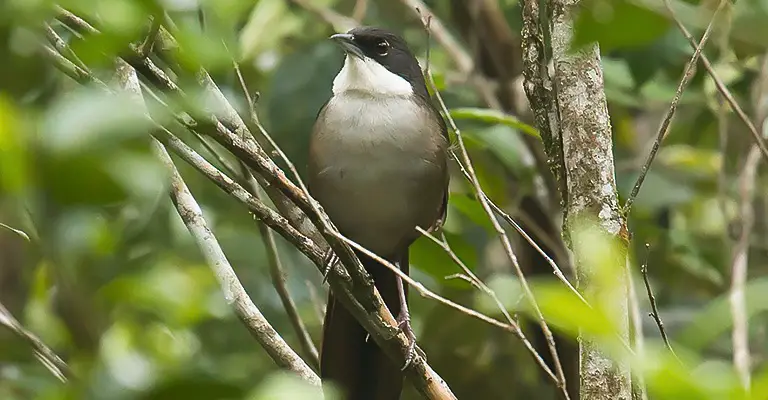
The Western chat-tanager is a beautiful, vulnerable passerine bird belonging to the family Calyptophilidae. Endemic to Hispaniola island shared by Dominican Republic and Haiti, it was once considered as a subspecies of Eastern chat-tanager.
The male has greyish head with whitish supercilium while its back and wings are olive green in color. Its breast is yellow orange fading in an ochre tone towards the belly region whereas throat area is white.
The female on the other hand exhibits browner upper parts than males and their underparts too appear duller compared to them.
Though similar looking species occur sympatrically, vocalizations can be used for distinguishing between both members of this genus effectively due to differences observed in range frequency or tonal quality among them.
Thus western chat tanagers have been able influence conservation efforts being made for saving these birds from extinction by easily identifying them without any confusion .
Scientific classification:
| Kingdom | Animalia |
| Phylum | Chordata |
| Class | Aves |
| Order | Passeriformes |
| Family | Calyptophilidae |
| Genus | Calyptophilus |
| Species | C. tertius |
10. Tanagers
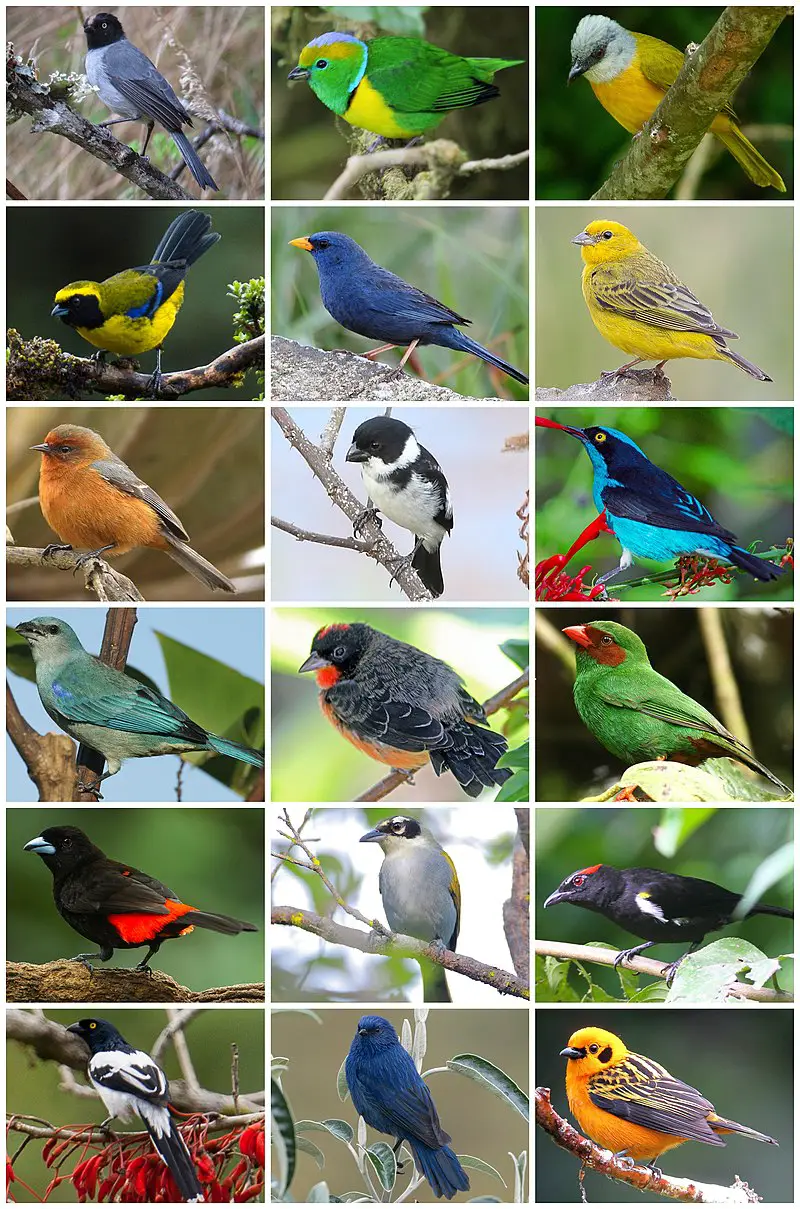
The Tanagers are a beautiful and diverse family of birds native to the Neotropical region. They boast an impressive array of colors, including blues, greens, yellows and reds.
The most common type is the fruit-eating tanager that can be found in tropical forests across Latin America. With nearly 240 species worldwide, they represent almost 4% of all avian species.
These vibrant birds have adapted well to their environment due to their strong bills used for cracking open hard fruits as well as sharp claws for gripping branches while feeding or perching.
As with many other bird families there is natural variation among populations making each one unique in its own way; something that makes them even more special.
Scientific classification:
| Kingdom | Animalia |
| Phylum | Chordata |
| Class | Aves |
| Order | Passeriformes |
| Superfamily | Emberizoidea |
| Family | Thraupidae Cabanis, 1847 |
11. Ridgway’s Hawk
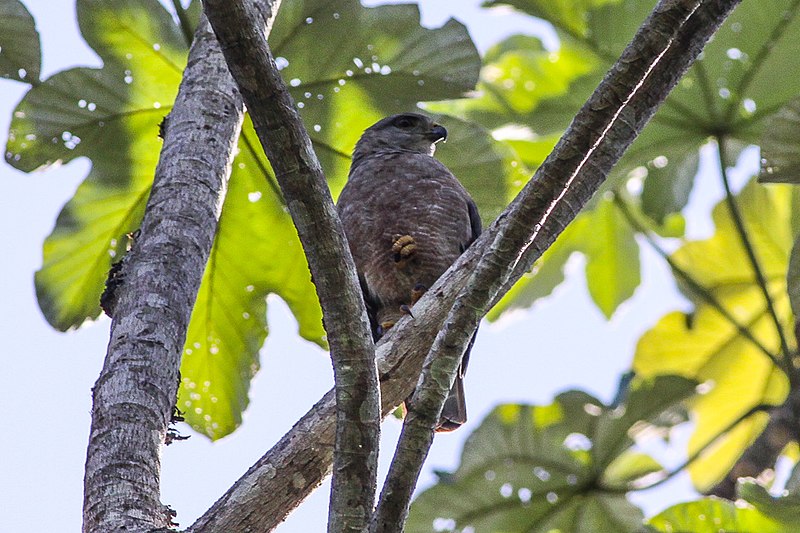
Ridgway’s Hawk is a critically endangered bird of prey native to Hispaniola island in the Caribbean.
This majestic raptor is named after American ornithologist Robert Ridgway and has been threatened by habitat destruction and human persecution in the Dominican Republic.
Thankfully, conservation efforts have enabled its population to start increasing again.
It stands out because of its distinctively dark plumage with light barring on breast, belly, and wings; creamy white throat; bright yellow eyes; curved black beak; long legs covered with reddish feathers at base; and broad tail banded with pale gray or whitish-yellow stripes.
Its diet consists mostly of small mammals such as rodents but it also feeds on reptiles, amphibians, insects etc., making it an important part of local ecosystems.
Scientific classification:
| Kingdom | Animalia |
| Phylum | Chordata |
| Class | Aves |
| Order | Accipitriformes |
| Family | Accipitridae |
| Genus | Buteo |
| Species | B. ridgwayi |
12. Hispaniolan Spindalis
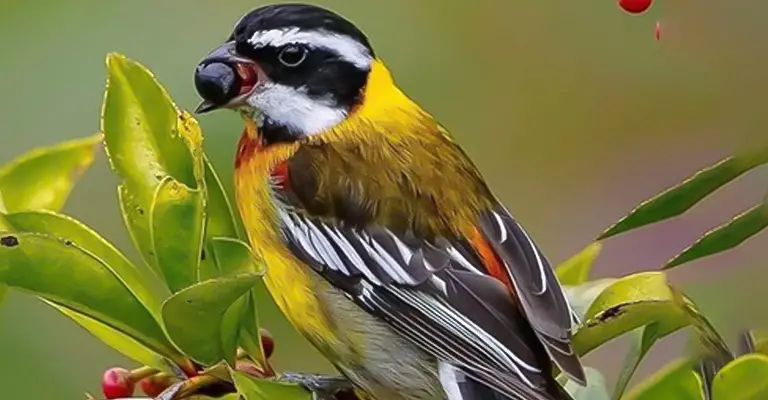
The Hispaniolan spindalis is a vibrant and colorful bird found only in the Caribbean island of Hispaniola. It’s one of four species in the Spindalidae family and was historically known as stripe-headed tanager.
Its plumage consists of bright yellow, red, black, white, gray and brown feathers that give it an attractive appearance. The wings are short but broad which helps them to fly fast from tree to tree looking for food like insects or fruits.
They can also be spotted near rivers searching for small fish or other aquatic invertebrates.
This amazing bird is quite social so you may find several individuals congregating together often forming pairs during breeding season when they build their nest on trees among branches close to trunks where they lay two eggs at once before incubation lasts about 13 days until hatching occurs around mid April through May period each year.
Scientific classification:
| Kingdom | Animalia |
| Phylum | Chordata |
| Class | Aves |
| Order | Passeriformes |
| Family | Spindalidae |
| Genus | Spindalis |
| Species | S. dominicensis |
13. Eastern Chat-Tanager
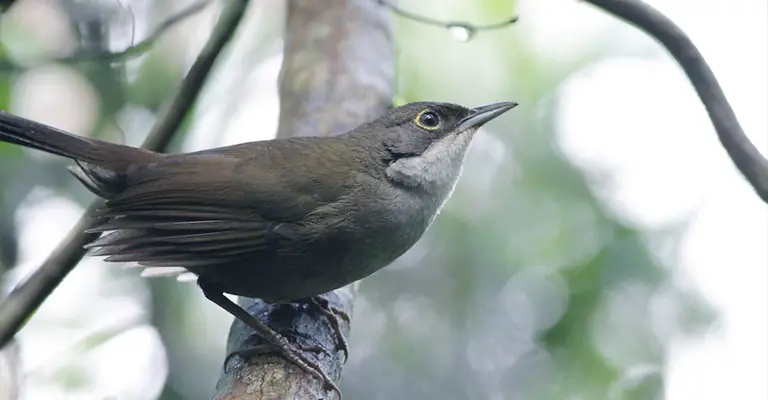
The Eastern chat-tanager is a Near Threatened bird species endemic to the island of Hispaniola. It belongs to the Calyptophilidae family and has three subspecies – C.
f. frugivorus, C.f neibae and C.f abbotti; with only one surviving in Haiti today.
This small passerine has grey wings, blue upperparts and white underparts on its body which makes it distinctive among other birds found in this area of the world.
The diet consists mostly of fruits as well as insects that they can find while foraging through trees or shrubs near their habitats located mainly at higher elevations on both sides of islands forming Hispaniola region..
Conservation efforts are needed if we want these beautiful creatures to stay around us for many more years.
Scientific classification:
| Kingdom | Animalia |
| Phylum | Chordata |
| Class | Aves |
| Order | Passeriformes |
| Family | Calyptophilidae |
| Genus | Calyptophilus |
| Species | C. frugivorus |
14. Village Weaver
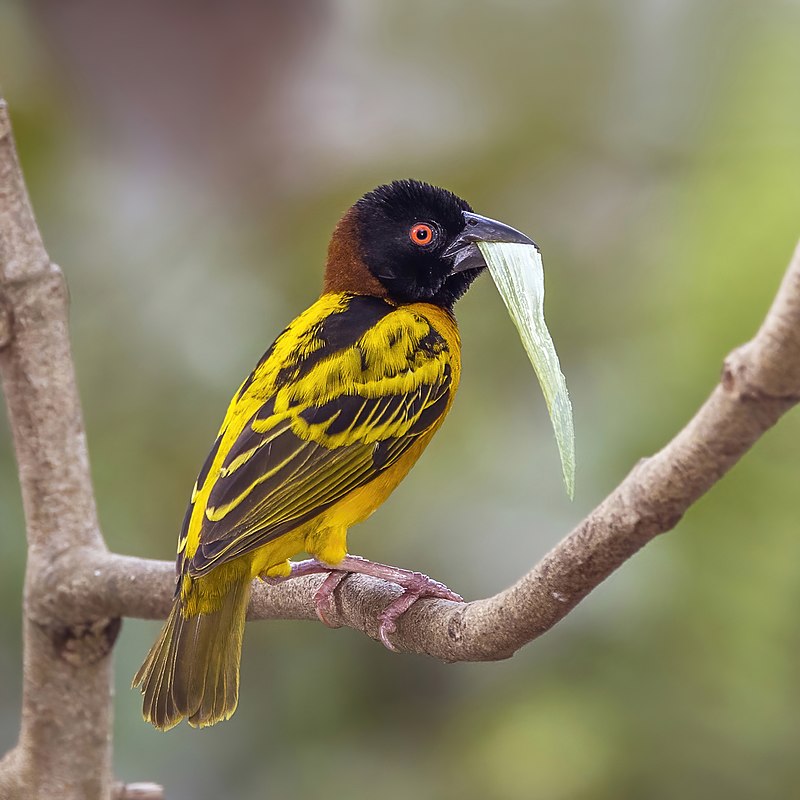
The Village Weaver is a bird found in sub-Saharan Africa, as well as on islands like Hispaniola and Martinique.
It has distinctive black heads with white spots on its back and wings.
They feed mainly on seeds but also eat some insects. The males build nests made of grasses that hang from branches or trees to attract mates during breeding season.
These birds are social creatures often seen in pairs or small groups foraging together in the same area.
Their calls are melodious chirps which can be heard throughout their range when they communicate danger or alert each other of food sources nearby.
Scientific classification:
| Kingdom | Animalia |
| Phylum | Chordata |
| Class | Aves |
| Order | Passeriformes |
| Family | Ploceidae |
| Genus | Ploceus |
| Species | P. cucullatus |
15. Tyrant Flycatchers
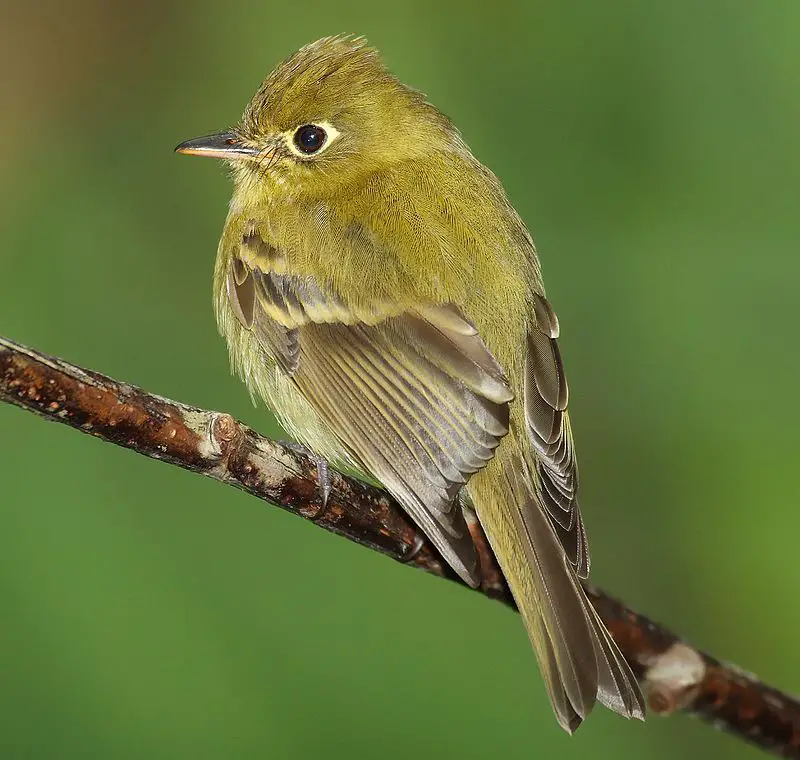
Tyrant flycatchers are a family of birds found in North and South America, containing over 400 species. These birds come in an array of shapes and sizes, with vibrant plumage to match.
They�re the most diverse avian family across all countries they inhabit except for the United States and Canada.
Their diet consists mainly of insects but also includes small reptiles or amphibians where available.
The behavior varies between each bird; some prefer open areas while others like dense forests as their habitat � many even migrate regularly.
Tyrant Flycatchers have adapted well to human presence thanks to the abundance of food sources that often accompany it � such as backyards, parks etc..
All things considered these incredible creatures are truly amazing.
Scientific classification:
| Kingdom | Animalia |
| Phylum | Chordata |
| Class | Aves |
| Order | Passeriformes |
| Parvorder | Tyrannida |
| Family | Tyrannidae Vigors, 1825 |
16. Narrow-Billed Tody
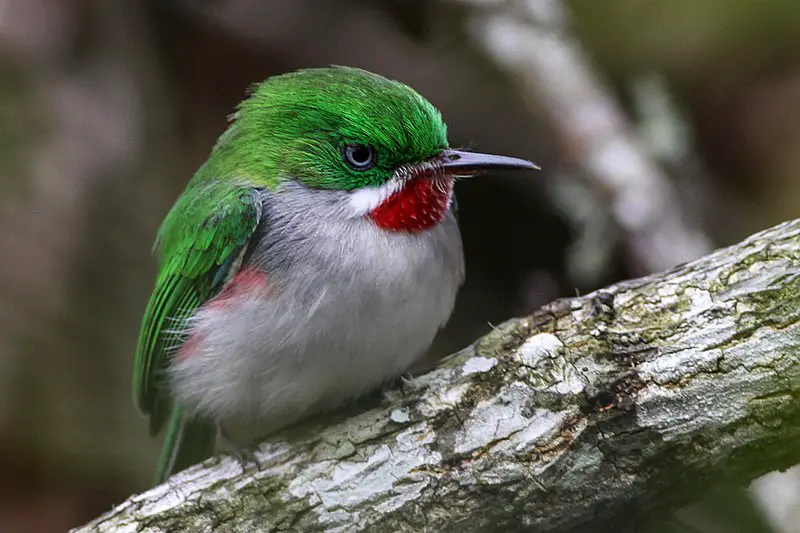
The Narrow-billed tody is a species of bird found only on the Caribbean island Hispaniola, shared by the Dominican Republic and Haiti. It has a distinctive narrow bill, hence its name.
This small colorful bird measures up to 4 inches in length and features an olive green back with yellowish head, throat and chest as well as white underparts. The male also sports two black stripes above each eye while females have one stripe per eye.
These birds feed mainly on insects which they capture from foliage or catch out of midair using their wings for balance during flight maneuvers.
They are usually seen singly or in pairs but rarely form larger flocks like other types of Todidae family members do.
Narrow-billed todies inhabit forests both dry and wet, evergreen shrubs near riversides and even urban gardens where trees provide plenty food sources such as caterpillars
Scientific classification:
| Kingdom | Animalia |
| Phylum | Chordata |
| Class | Aves |
| Order | Coraciiformes |
| Family | Todidae |
| Genus | Todus |
| Species | T. angustirostris |
17. Greater Antillean Grackle
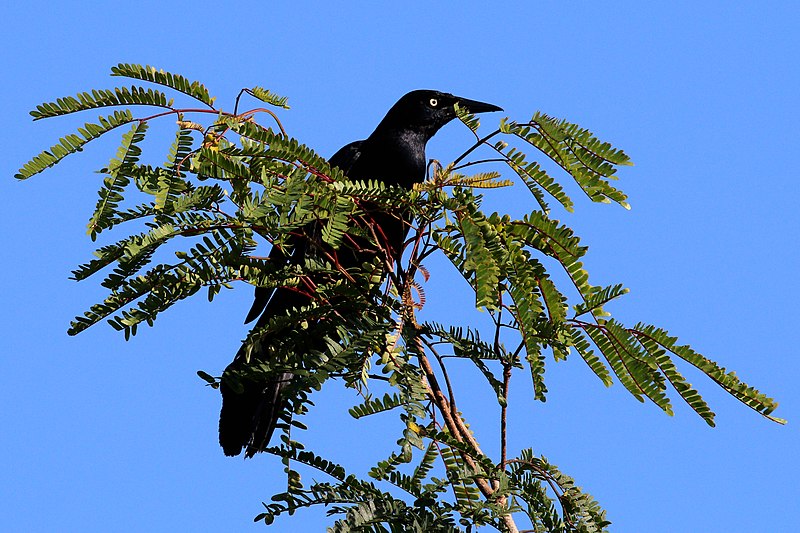
The Greater Antillean grackle is a large, sociable bird found in the Caribbean. It inhabits heavily populated areas and its call has been described as “kling-kling” or “chinchilin” in the Dominican Republic, “ching ching” in the Cayman Islands and ‘Chango’ by Puerto Rico locals.
They are mostly black with green iridescence on their upperparts, wings and tail feathers.
These birds feed mainly of insects but also consume fruits from trees like guava and mangoes.
Their diet supplements can include breadcrumbs from picnic tables that they often frequent near human dwellings for food scraps left behind by humans which allow them to survive even during dry seasons when other sources of food become scarce.
Scientific classification:
| Kingdom | Animalia |
| Phylum | Chordata |
| Class | Aves |
| Order | Passeriformes |
| Family | Icteridae |
| Genus | Quiscalus |
| Species | Q. niger |
18. Magnificent Frigatebird
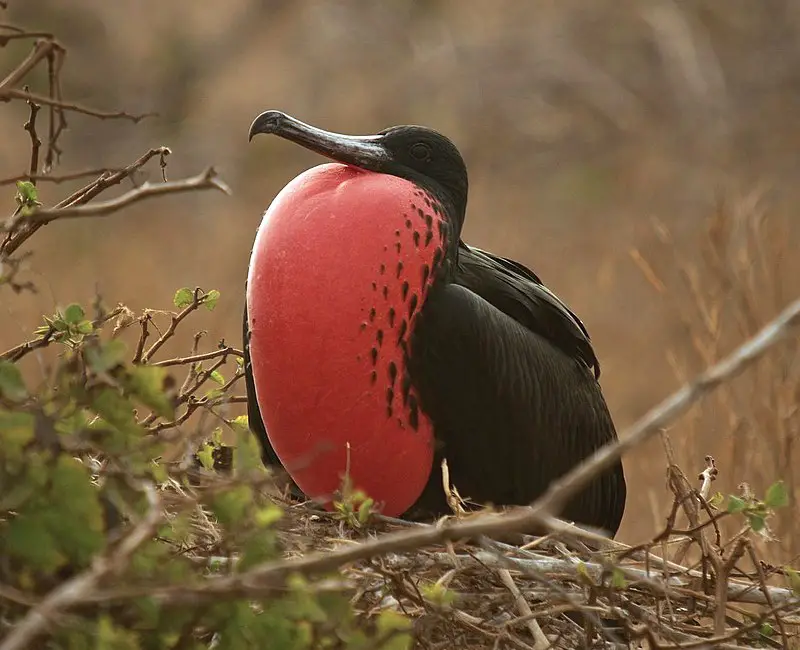
The Magnificent Frigatebird is the largest species of frigatebird, measuring between 89 and 114 cm in length and having a wingspan of 7-8 ft.
It can be found over tropical waters off America from northern Mexico to Peru on the Pacific coast, as well as Florida down south.
Its diet consists mainly of fish they take from other seabirds or snatch directly from the ocean surface while flying low above it.
They also feed on crustaceans and squid when available too.
This impressive bird has an unmistakable silhouette with its long pointed wings, forked tail feathers and male’s red gular pouch which inflates during courtship displays.
Scientific classification:
| Kingdom | Animalia |
| Phylum | Chordata |
| Class | Aves |
| Order | Suliformes |
| Family | Fregatidae |
| Genus | Fregata |
| Species | F. magnificens |
19. American Flamingo
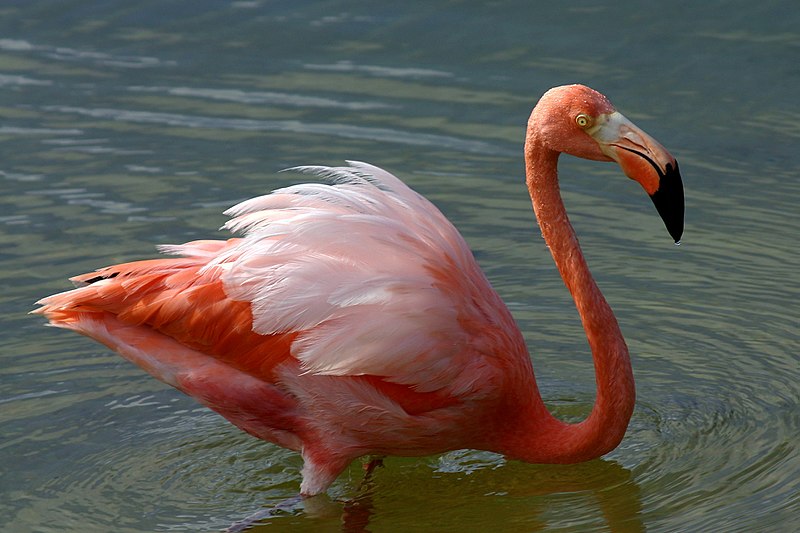
The American flamingo is a large species of bird found in the Neotropics. It has bright pink feathers and long legs, making it easily distinguishable from other species of flamingos.
The diet consists mostly of shrimp and small fish but they are also known to eat algae, aquatic insects, mollusks, crustaceans and seeds.
They live around coastal lagoons or salt ponds in colonies with thousands of birds nesting together on mud flats.
Flamingos build nests out of sticks that sit atop their feet as they wade through shallow waters looking for food during low tide periods when these areas become more accessible for feeding purposes.
These birds have an interesting courtship ritual involving neck stretching which looks like a dance to attract mates before breeding season begins in May-June each year leading to chicks hatching during July-August time period
Scientific classification:
| Kingdom | Animalia |
| Phylum | Chordata |
| Class | Aves |
| Order | Phoenicopteriformes |
| Family | Phoenicopteridae |
| Genus | Phoenicopterus |
| Species | P. ruber |
20. Hispaniolan Crossbill
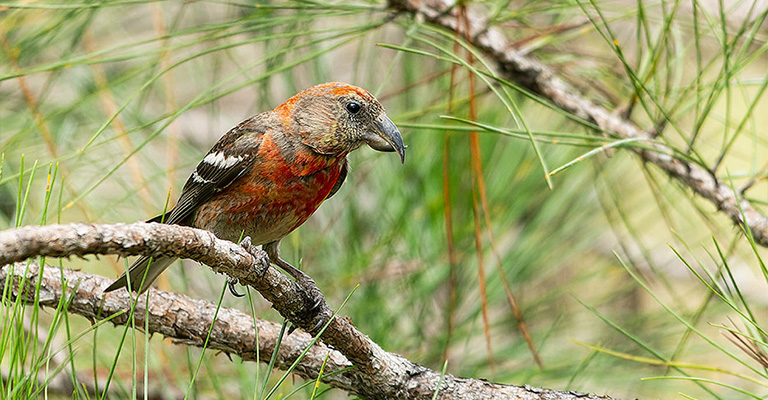
The Hispaniolan crossbill is a unique bird species endemic to the Caribbean island of Hispaniola. It belongs to the Loxia genus and was formerly regarded as conspecific with two-barred crossbill.
This species has adapted itself well in its environment, making it an important part of this region’s biodiversity.
Its bill shape helps it feed on pine cones, which are abundant throughout Haiti and Dominican Republic forests where they inhabit isolated mountaintops.
The bright orange plumage makes them stand out among other birds while also helping them blend into their surroundings when perched amongst branches or rocks.
They form flocks that travel together seeking food sources such as conifer seeds during winter months giving us another reason why we should protect these birds for future generations.
Scientific classification:
| Kingdom | Animalia |
| Phylum | Chordata |
| Class | Aves |
| Order | Passeriformes |
| Family | Fringillidae |
| Subfamily | Carduelinae |
| Genus | Loxia |
| Species | L. megaplaga |
21. Bananaquit
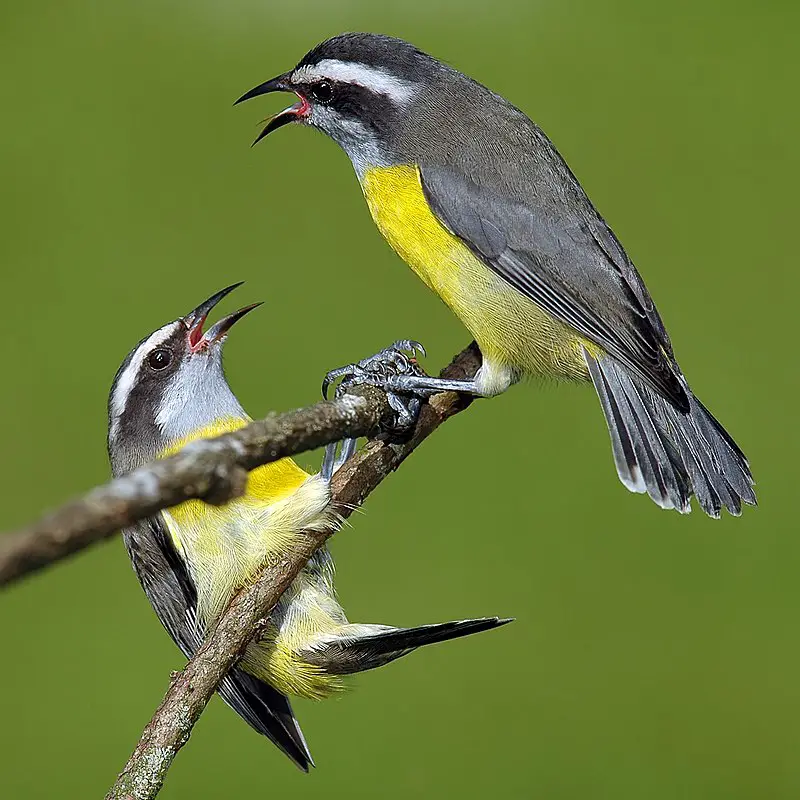
The Bananaquit, scientifically known as Coereba flaveola, is a small passerine bird belonging to the tanager family Thraupidae.
It was previously classified in either its own monotypic family or with other species such as buntings and New World sparrows (Emberizidae) or warblers (Parulidae).
This beautiful little bird has a yellow-green upper body, pale grey head and chestnut brown wings.
Its tail feathers are blackish while its belly is white with some faint streaks of olive green coloration.
The bananaquit can be found across Central America and the Caribbean islands where it feeds on fruits like bananas for which it gets its name from.
Scientific classification:
| Kingdom | Animalia |
| Phylum | Chordata |
| Class | Aves |
| Order | Passeriformes |
| Family | Thraupidae |
| Genus | Coereba Vieillot, 1809 |
| Species | C. flaveola |
Also Featured In: Rainforest Birds You Should Know, Birds that You’ll Find in Puerto Rico
22. Red-Tailed Hawk
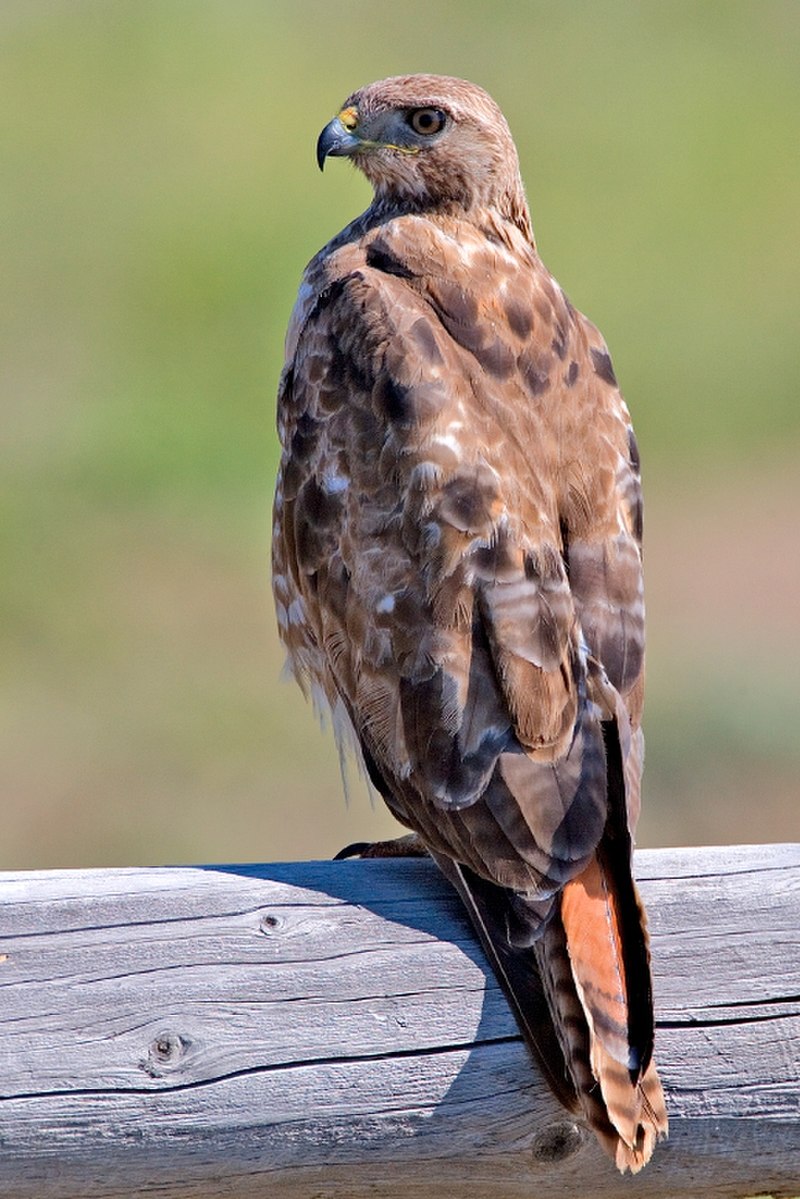
It is a majestic bird of prey with a distinctive red tail. It can be found throughout North America, from Alaska in the north to Panama and the West Indies in the south.
This species belongs to the Buteo genus, which makes it one of the most common raptors on Earth.
These hawks mainly hunt small mammals such as rabbits or squirrels but also feed on reptiles and birds during migration season.
Unlike other predator birds, they prefer open areas for hunting like fields or grasslands rather than dense forests.
They build their nests high up on trees where they stay all year long unless disturbed by humans or animals nearby.
Their presence has become an iconic part of American culture due to their frequent sightings around homes and parks alike making them beloved creatures among people everywhere.
Scientific classification:
| Kingdom | Animalia |
| Phylum | Chordata |
| Class | Aves |
| Order | Accipitriformes |
| Family | Accipitridae |
| Genus | Buteo |
| Species | B. jamaicensis |
Also Featured In: Birds That Live in Colorado, Birds Commonly Found in New York
23. Northern Bobwhite
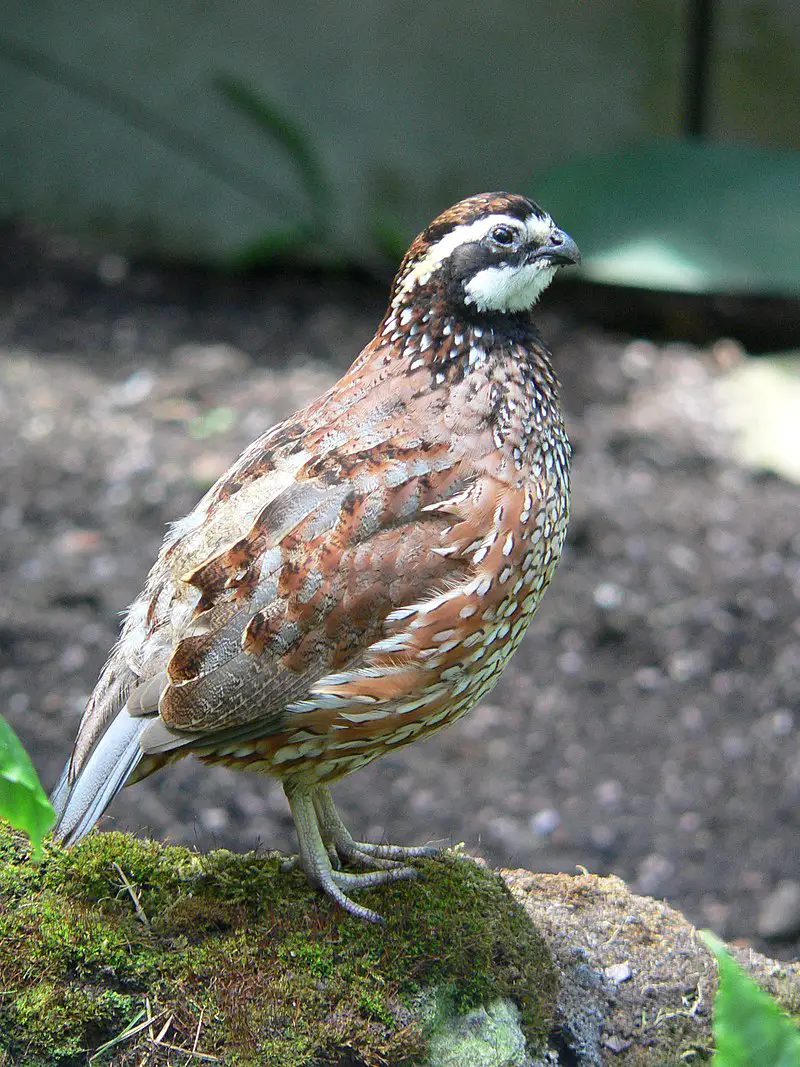
The Northern bobwhite is a ground-dwelling bird native to parts of the Americas, with introduced populations elsewhere in the world.
It belongs to the New World quail family and has a distinctive call that can be heard during mating season or when their territory is threatened.
They have mottled brown plumage which helps them blend into their natural habitats such as grasslands, wooded areas and open fields.
The male birds are slightly larger than females and they feed on small insects, seeds and plants.
These birds form monogamous breeding pairs that stay together throughout most of the year raising several broods each year until migrating south for winter months.
Though declining due to habitat loss, these resilient little birds can still be found living in many places across North America.
Scientific classification:
| Kingdom | Animalia |
| Phylum | Chordata |
| Class | Aves |
| Order | Galliformes |
| Family | Odontophoridae |
| Genus | Colinus |
| Species | C. virginianus |
24. Wilson’s Storm Petrel
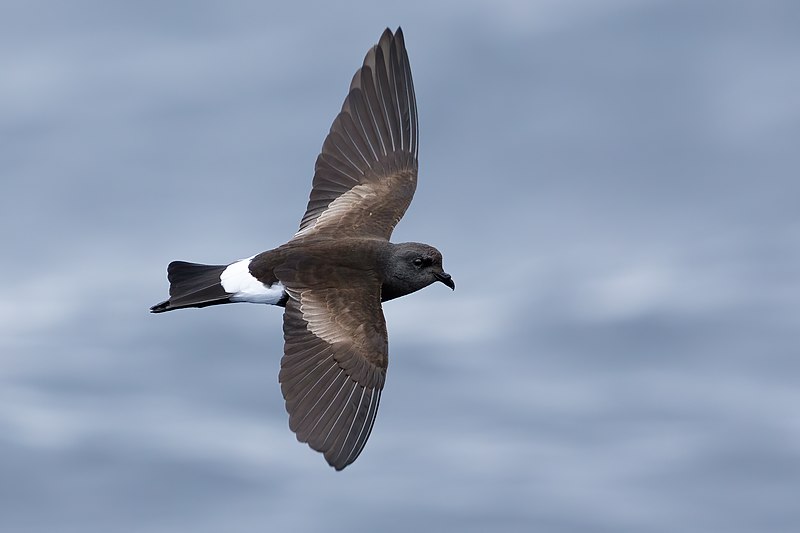
Wilson’s storm petrel is a small seabird of the Oceanitidae family. A circumpolar species, it can be found in both northern and southern hemispheres during summertime.
It has an abundance population estimated to be around 20 million birds as of 2022 making it one of the most populous bird species on Earth.
This nocturnal creature loves to feed on crustaceans, fish eggs and larval fishes that they catch while flying at night over open waters near coasts or islands.
During daylight hours Wilson’s Storm Petrel will rest in large groups and form colonies with fellow members for protection against predators like gulls and skuas which steal their food supplies if given opportunity.
Scientific classification:
| Kingdom | Animalia |
| Phylum | Chordata |
| Class | Aves |
| Order | Procellariiformes |
| Family | Oceanitidae |
| Genus | Oceanites |
| Species | O. oceanicus |
Also Featured In: Birds You’ll Find in the Sea, Birds Live in Tunisia
25. Northern Jacana
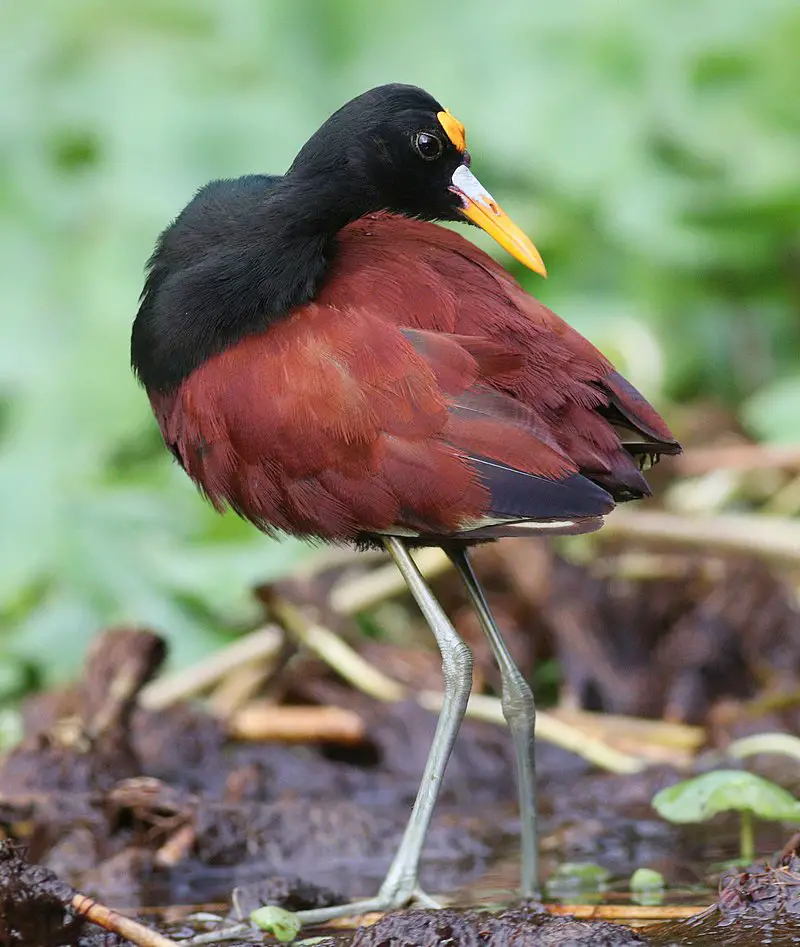
The Northern Jacana is a wading bird native to Mexico, Panama, Cuba, Jamaica and Hispaniola. It can also be found in Texas as a resident breeder or on rare occasions in Arizona as a vagrant.
This species of wetland birds are easily identified by their immense size and large feet with long toes that help them walk atop floating vegetation while searching for food.
Their upperparts have black feathers streaked with white whilst its underparts display brown plumage marked by yellowish spots near the wingtips.
They feed primarily on insects but will also eat other aquatic invertebrates like crustaceans or mollusks when available.
The female builds an untidy nest made from leaves close to water so she can quickly escape predators if needed.
Scientific classification:
| Kingdom | Animalia |
| Phylum | Chordata |
| Class | Aves |
| Order | Charadriiformes |
| Family | Jacanidae |
| Genus | Jacana |
| Species | J. spinosa |
Also Featured In: Birds that Live in Jalisco Birds, Most Common Oaxaca Birds
26. Mimid

Mimid birds are a diverse family of passerines found in the New World. They have an impressive vocal range and many species excel at mimicking other bird songs, as well as noises from their environment.
Mimids can be identified by their flat heads with short crest feathers, long tails, large eyes and strong legs for hopping between branches.
These birds typically inhabit open woodlands or scrubland areas where they feed on insects such as beetles, caterpillars and grasshoppers.
Some species also supplement their diet with fruits or grains when available. While most do not migrate far during winter months some may undertake longer migrations to warmer climates if necessary to survive cold weather spells.
The wide variety of sounds these talented singers produce make them one of nature’s great musical performers.
Scientific classification:
| Kingdom | Animalia |
| Phylum | Chordata |
| Class | Aves |
| Order | Passeriformes |
| Superfamily | Muscicapoidea |
| Family | Mimidae Bonaparte, 1853 |
27. Spindalis
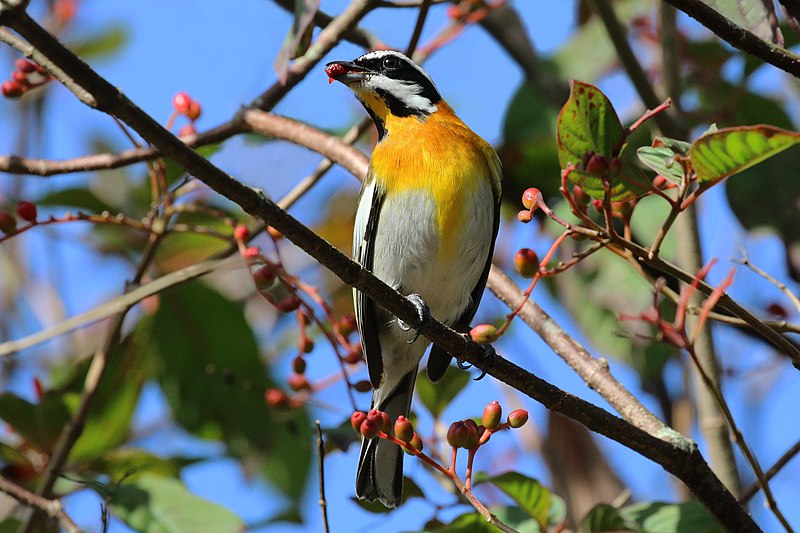
Spindalis is a genus of four species of non-migratory birds belonging to the family Spindalidae. Most are endemic to the West Indies, but there are also populations in Cozumel Island off Yucatán Peninsula and southeastern Florida.
These birds have traditionally been considered aberrant tanagers due to their similarity in appearance with them.
They have small bodies, short wings and long tails which they use for agility when feeding on fruits or invertebrates found on trees or shrubs.
The plumage varies across species from greenish yellow combined with browns and blacks to bright yellows mixed with reds, blues and greens depending on sex/seasonal changes.
Their diet includes mostly fruit but can supplement it by hunting insects while flying as well as eating nectar from flowers occasionally too.
Scientific classification:
| Kingdom | Animalia |
| Phylum | Chordata |
| Class | Aves |
| Order | Passeriformes |
| Superfamily | Emberizoidea |
| Family | Spindalidae Barker, Burns, Klicka, Lanyon, & Lovette, 2013[1] |
| Genus | Spindalis Jardine & Selby, 1837 |
28. Northern Potoo
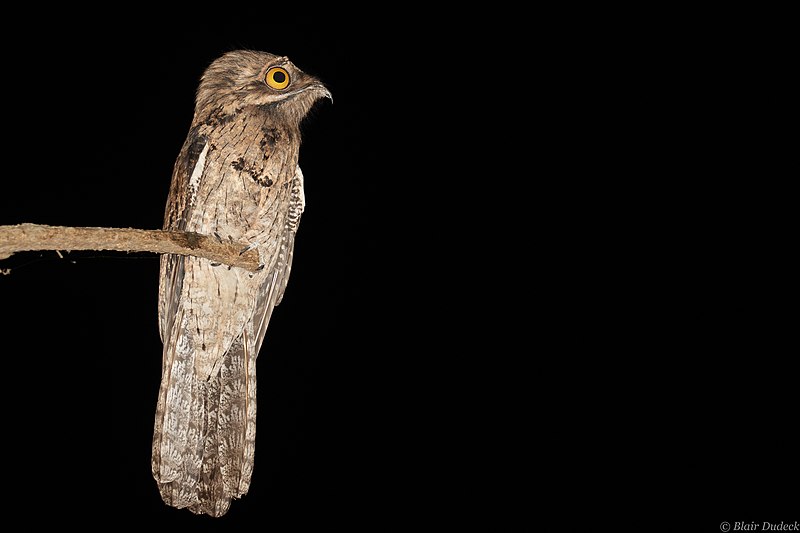
The Northern Potoo is a nocturnal bird belonging to the Nyctibiidae family. It inhabits Mexico, Central America and some of the Caribbean Islands such as Jamaica and Hispaniola where it can be found in tropical dry forests.
It was formerly classified as a subspecies of Common Potoo but due to differences in vocalizations they are now considered separate species.
This interesting bird has an almost comical appearance with its large head, long bill, short neck and disproportionately long legs that give it an awkward gait when walking on land.
Its plumage is mottled grey-brown which helps camouflage itself during the day while perched motionless on tree branches looking for prey at night.
The Northern Potoos call consists mostly or whistles ending with trills making them quite easy to identify within their range area
Scientific classification:
| Kingdom | Animalia |
| Phylum | Chordata |
| Class | Aves |
| Order | Nyctibiiformes |
| Family | Nyctibiidae |
| Genus | Nyctibius |
| Species | N. jamaicensis |
29. Jacanas
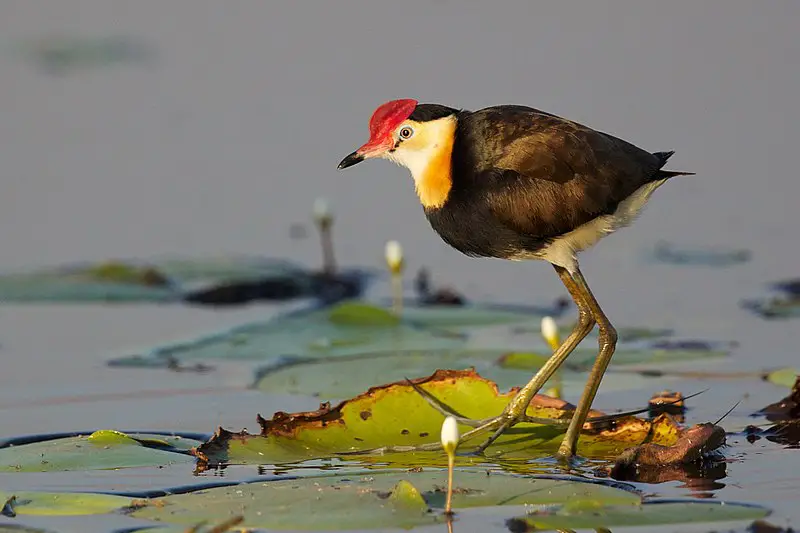
Jacanas are tropical waders belonging to the Jacanidae family. They have distinctive elongated toes and toenails which help them forage on floating or semi-emergent aquatic vegetation.
This adaptation gives them their nickname “Jesus birds” as they seem to be able to walk on water.
The female jacanas are also unique amongst bird species in that they take charge of nest building, incubation and caring for young while males perform courtship displays.
These unusual birds can be found throughout the world’s tropical regions where they inhabit wetlands such as swamps, marshes and shallow lakes with lily pads.
With a wide variety range due their special adaptations these beautiful creatures will surely continue living life at ease around our planet’s warmest waters.
Scientific classification:
| Kingdom | Animalia |
| Phylum | Chordata |
| Class | Aves |
| Order | Charadriiformes |
| Suborder | Thinocori |
| Family | Jacanidae Stejneger, 1885 |
30. La Selle Thrush
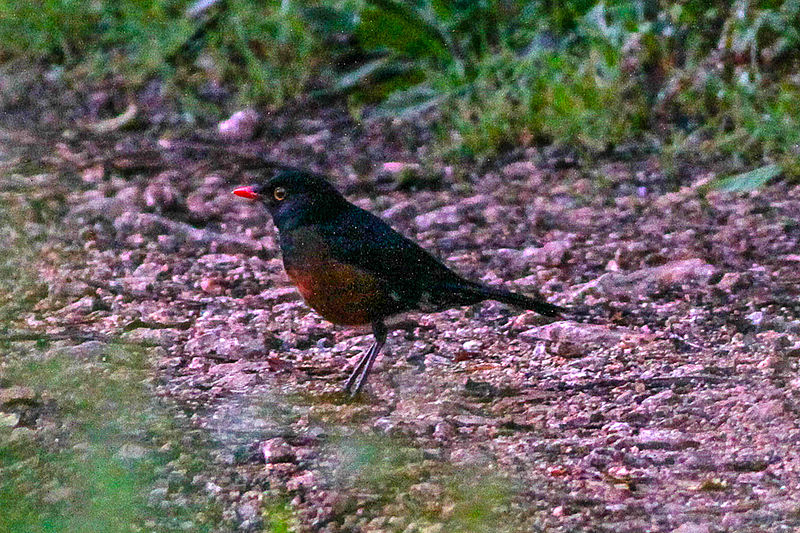
The La Selle thrush is an endemic bird species found in Hispaniola, a Caribbean island shared by the Dominican Republic and Haiti.
It is a skulker of broadleaf and pine forests located around 1300m elevation where it has limited population which continues to decline due to habitat destruction.
Its name comes from Pic la Selle, Haiti where its relict population lives.
The La Selle Thrush is identified as having rusty-brown upperparts and white underparts with dark spots along the sides of its neck area, making it easy to differentiate from other birds within its range.
Unfortunately because of human activities such as deforestation this beautiful creature’s future remains uncertain but conservation efforts are being made for them in both countries they inhabit so that we can continue admiring them for years to come.
Scientific classification:
| Kingdom | Animalia |
| Phylum | Chordata |
| Class | Aves |
| Order | Passeriformes |
| Family | Turdidae |
| Genus | Turdus |
| Species | T. swalesi |
31. Belted Kingfisher
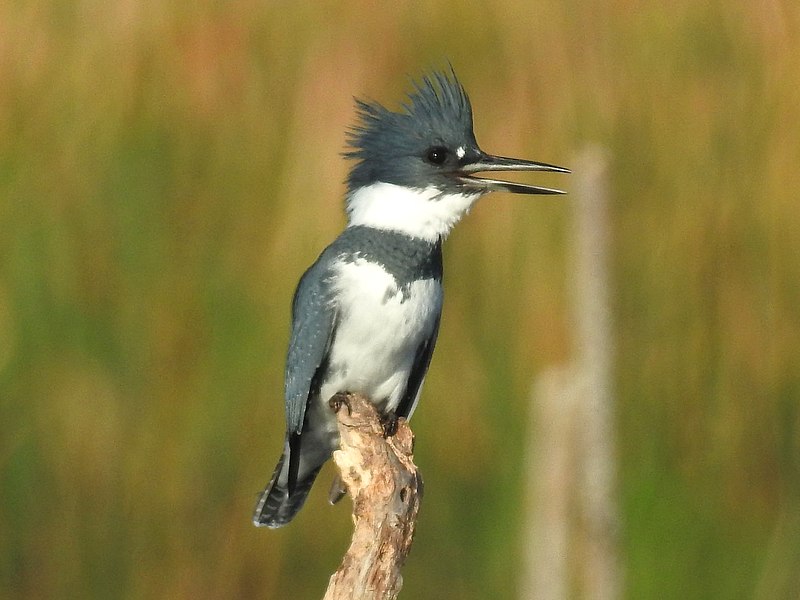
The belted kingfisher is a large, eye-catching bird native to North America. It belongs to the family Alcedinidae and has been divided into three subfamilies by recent research.
The species was first described in 1758 by Carl Linnaeus in his Systema Naturae.
This water Kingfisher stands out for its size as well as its striking plumage; males are bright blue on top with white below and females have rusty brown backs and wings with a thick black breast band across their chest.
They also possess an impressive call which can be heard from quite far away.
Belted kingfishers feed mainly on small fish but will sometimes also eat crustaceans, insects or even amphibians if they come across them while hunting around rivers or streams.
All in all, this is truly one remarkable bird that deserves our admiration.
Scientific classification:
| Kingdom | Animalia |
| Phylum | Chordata |
| Class | Aves |
| Order | Coraciiformes |
| Family | Alcedinidae |
| Subfamily | Cerylinae |
| Genus | Megaceryle |
| Species | M. alcyon |
32. Antillean Euphonia
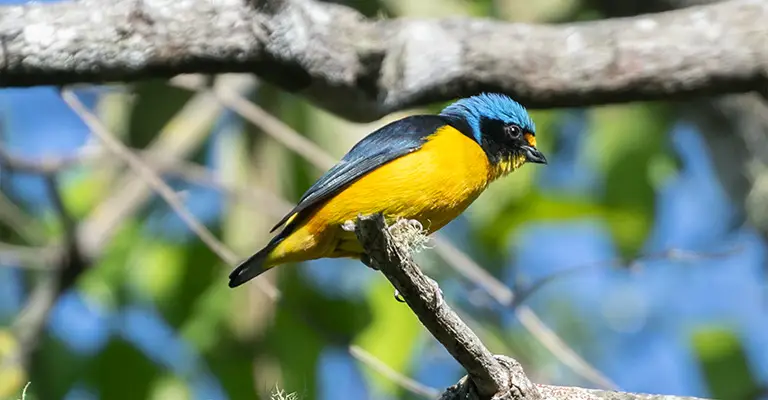
The Antillean euphonia is a colorful and beautiful bird species found across the Lesser Antilles, Hispaniola (Dominican Republic and Haiti) and Puerto Rico.
It belongs to Fringillidae family of finches. This small songbird has strong yellow feathers on its head with blue-green upperparts while they have bright orange breasts and bellies.
Their wings are blackish with white tips, giving them an attractive look when flying in flocks through woodlands or forest edges.
They inhabit subtropical or tropical dry forests as well as moist lowland forests including degraded former ones too.
The populations of this species are declining due to deforestation but still remain common throughout their range if habitats can be preserved for their long term future survival.
Scientific classification:
| Kingdom | Animalia |
| Phylum | Chordata |
| Class | Aves |
| Order | Passeriformes |
| Family | Fringillidae |
| Subfamily | Euphoniinae |
| Genus | Chlorophonia |
| Species | C. musica |
33. Buff-Bellied Pipit
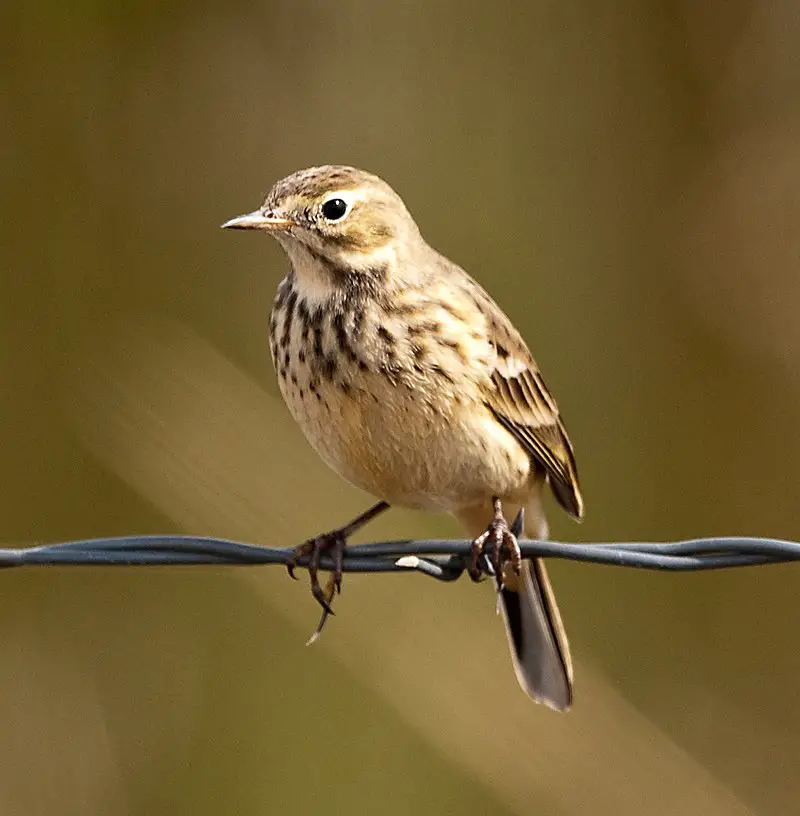
The Buff-bellied Pipit is a small songbird found across the northern Pacific, first described by Marmaduke Tunstall in his 1771 Ornithologia Britannica.
Formerly classified as a form of the Water pipit, it’s known as “American pipit” in North America and “buff-bellied pipit” in Eurasia.
This bird has brown upperparts and buff underparts with streaks on its breast.
Its tail feathers have white edges while its wings are blackish with pale fringes to each feather.
In flight this species displays a rapid twisting action which helps identify them from other similar birds flying nearby.
They feed mainly on insects but also eat seeds during winter months when there aren’t many insects around for them to catch and feast upon.
Scientific classification:
| Kingdom | Animalia |
| Phylum | Chordata |
| Class | Aves |
| Order | Passeriformes |
| Family | Motacillidae |
| Genus | Anthus |
| Species | A. rubescens |
Also Featured In: Birds that Live in Greenland, Common Vermont Winter Birds
34. Yellow-Breasted Chat
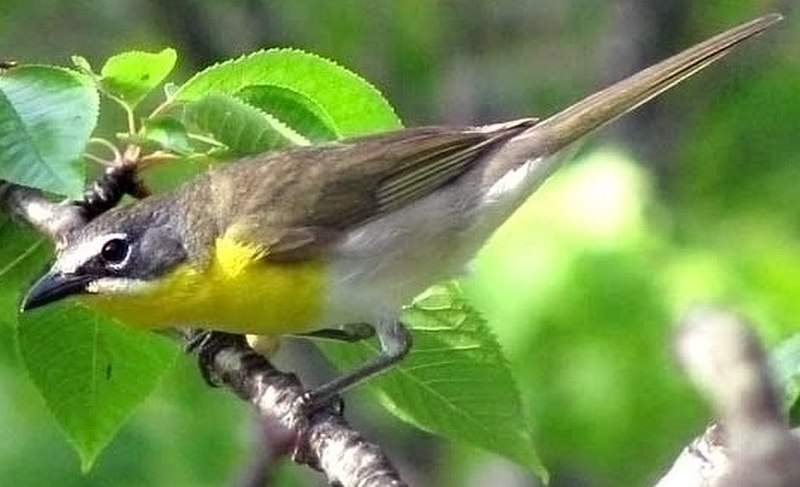
The Yellow-breasted Chat is a large songbird found in North America, and is the only member of its family Icteriidae.
It was once part of the New World Warbler family but has since been moved to its own group due to taxonomic uncertainty.
This bird stands out as it was previously thought to be the largest species within Parulida.
Its plumage features shades of yellow, olive green and browns; males have darker heads while females are slightly paler overall.
The chat’s diet consists mostly of insects such as caterpillars and beetles which they forage from low vegetation or glean off leaves on tree branches during summer months when their populations peak.
They also feed heavily on fruits like elderberry, grapes and wild cherries during migration periods throughout spring/fall season providing much needed energy for long journeys southwards or northwards depending upon geography location each year.
Scientific classification:
| Kingdom | Animalia |
| Phylum | Chordata |
| Class | Aves |
| Order | Passeriformes |
| Superfamily | Emberizoidea |
| Family | Icteriidae Baird, 1858 |
| Genus | Icteria Vieillot, 1808 |
| Species | I. virens |
Also Featured In: Birds Live in Arkansas, Common Birds in Alberta
35. Waxwing Birds
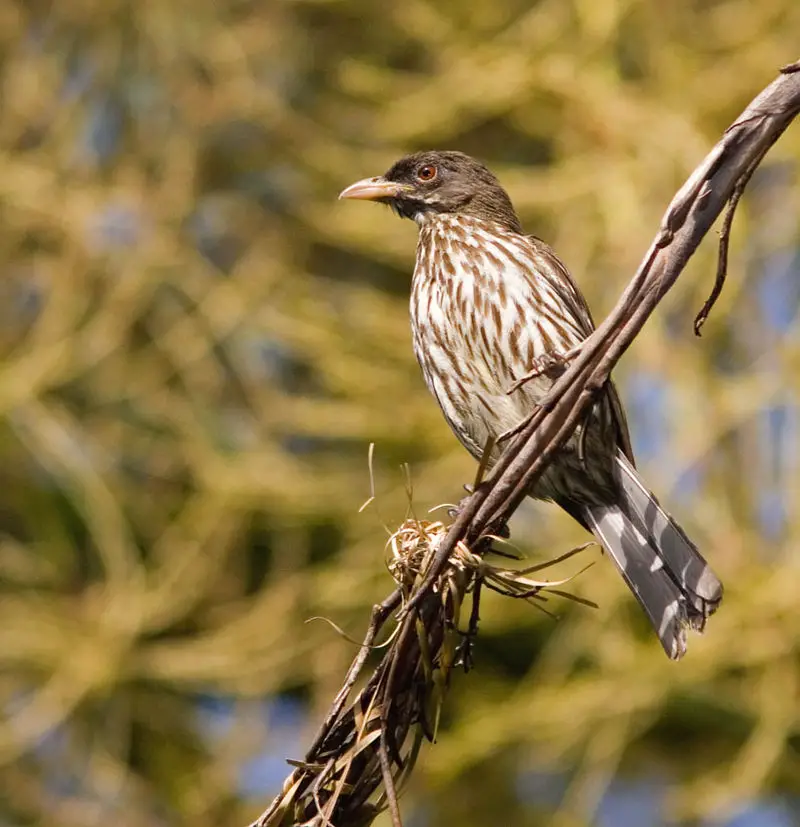
Waxwings are beautiful birds native to North America and Eurasia. These small passerines have a unique plumage with bright red wax-like tips on their wings and tail feathers, hence the name ‘Waxwing’.
They also sport facial masks in shades of grey or brown along with striking yellow eyes. Waxwings feed on a variety of food including fruits, buds, insects etc., often travelling in large flocks during winter months when food is scarce.
The Cedar Waxwing is the only species that breeds exclusively in North America while Bohemian and Japanese waxwings breed mostly across northern Europe and Asia respectively.
All three species show strong migratory movements making them an interesting bird watching experience for enthusiasts around the world.
36. Regulidae

Waxwings are beautiful birds native to North America and Eurasia. These small passerines have a unique plumage with bright red wax-like tips on their wings and tail feathers, hence the name ‘Waxwing’.
They also sport facial masks in shades of grey or brown along with striking yellow eyes. Waxwings feed on a variety of food including fruits, buds, insects etc., often travelling in large flocks during winter months when food is scarce.
The Cedar Waxwing is the only species that breeds exclusively in North America while Bohemian and Japanese waxwings breed mostly across northern Europe and Asia respectively.
All three species show strong migratory movements making them an interesting bird watching experience for enthusiasts around the world.
37. Osprey

The Osprey is a majestic bird of prey with an incredibly wide habitat range. It has distinctive brown upperparts and greyish head and underparts, making it easily identifiable in the skies above many regions across the world.
With a wingspan of up to 180cm (71in) and body length reaching 60cm (24in), this large raptor specializes in hunting for fish, soaring high over rivers as well as coasts searching for its next meal.
Despite living near water sources, they can also be found inhabiting mountainsides or even woodlands, proving their incredible adaptability. An impressive species that truly deserves admiration.
Scientific classification:
| Kingdom | Animalia |
| Phylum | Chordata |
| Class | Aves |
| Order | Accipitriformes |
| Family | Pandionidae |
| Genus | Pandion |
| Species | P. haliaetus |
38. New World Sparrow
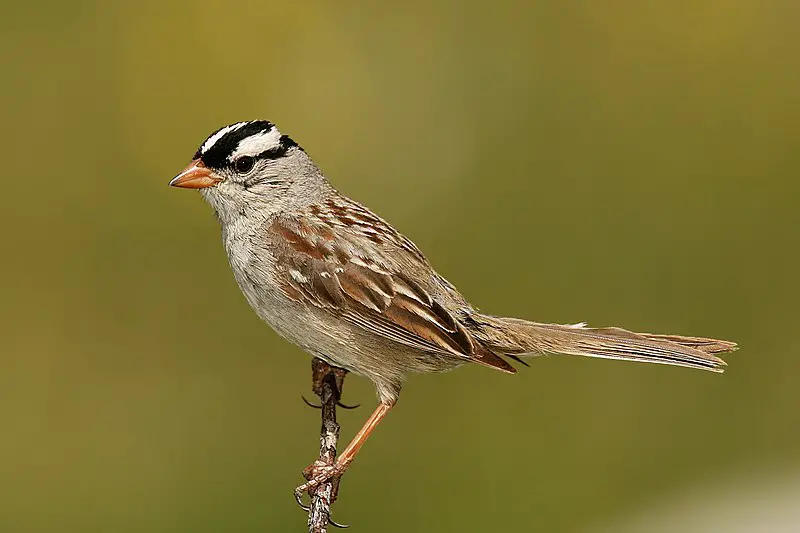
New World sparrows are passerine birds belonging to the family Passerellidae. They have conical bills, brown or grey plumage and many species have distinctive head patterns.
Though they share their name with Old World sparrows, they belong to a different family and are more closely related to buntings from the Old World.
These birds mainly feed on seeds but some of them also eat insects and fruits for nutrition.
New world sparrows inhabit open woodlands in North America as well as Central America, South America and even parts of Asia like Siberia.
They build cup-shaped nests using grasses, twigs and other materials found near by their habitats.
A few popular species include Dark eyed Junco (Junco hyemalis), White throated Sparrow (Zonotrichia albicollis)and Chipping Sparrow (Spizella passerina).
Scientific classification:
| Kingdom | Animalia |
| Phylum | Chordata |
| Class | Aves |
| Order | Passeriformes |
| Superfamily | Emberizoidea |
| Family | Passerellidae Cabanis, 1851 |
Also Featured In: Most Common Songs Birds that Live around You, Birds that Live in Manitoba
39. Stone-Curlew

Stone-curlews, also known as dikkops or thick-knees, are a family of birds that have adapted to live in tropical and temperate regions throughout the world.
They can be found in Africa, Asia and Australia with two or more species per region. Despite being classified as waders, most prefer dry arid habitats over moist wetlands.
Stone-curlews typically have long legs which help them navigate through their preferred terrain efficiently; some species even stand at an impressive height when standing on those long legs.
Additionally they feature cryptic plumage which helps them blend into their surroundings while hunting for prey such as insects and small mammals like rodents.
These unique bird’s calls are easily recognizable; it has been said that hearing one is similar to listening to someone whistling ‘Keee Weee’.
Scientific classification:
| Kingdom | Animalia |
| Phylum | Chordata |
| Class | Aves |
| Order | Charadriiformes |
| Suborder | Chionidi |
| Family | Burhinidae Mathews, 1912 |
40. Threskiornithidae
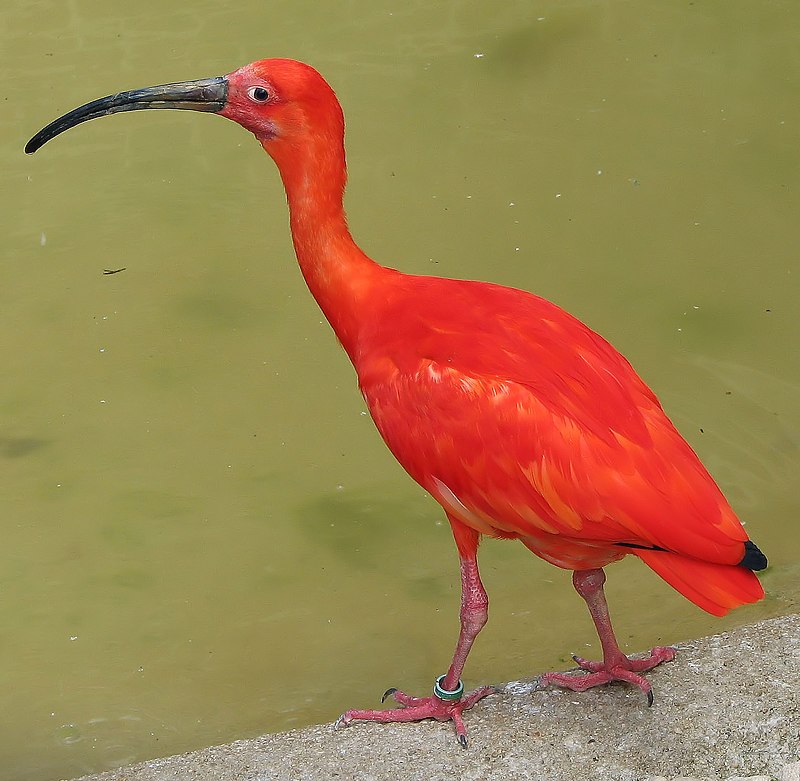
Threskiornithidae is a family of large wading birds which includes 36 species. These birds are traditionally divided into two subfamilies – the ibises and the spoonbills.
However, recent genetic analysis has shown that spoonbills actually belong to Old World ibis group, while New World ibises form an early offshoot from this lineage.
Threskiornithidse members have long curved beaks with serrated edges used for catching fish in shallow water or mudflats, as well as other aquatic invertebrates like crustaceans and mollusks.
They also feed on plant matter such as grains and seeds found close to wetlands areas where they live.
This diverse diet makes them important scavengers in their ecosystems, helping maintain healthy populations of native wildlife by controlling insect numbers and dispersing energy-rich seeds throughout wetland habitats.
Scientific classification:
| Kingdom | Animalia |
| Phylum | Chordata |
| Class | Aves |
| Order | Pelecaniformes |
| Suborder | Ardei |
| Family | Threskiornithidae Richmond, 1917 |
41. Skuas
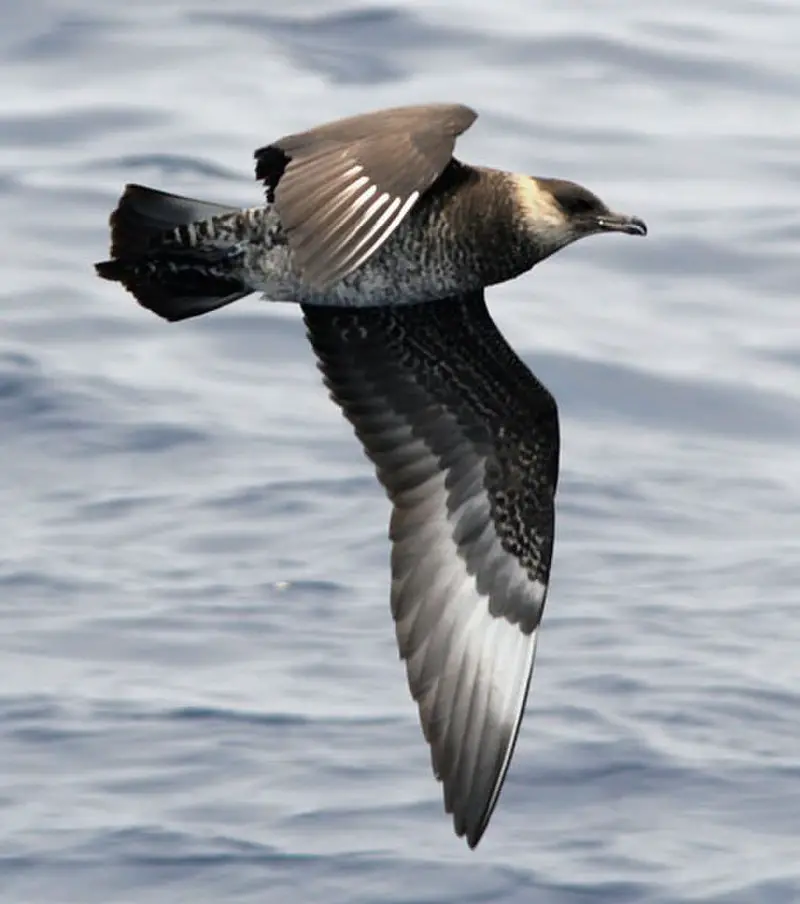
Skuas are a group of predatory seabirds with seven species, all belonging to the genus Stercorarius.
They are also known as “Jaegers” in North America and their name originates from the Faroese word for Great Skua – skúgvur.
These birds typically inhabit coastal areas or open oceans where they feed on fish, krill and other marine creatures.
Skuas can be distinguished by their pointed wings which help them fly long distances while hunting food.
Their distinctive colouration varies depending on age and habitat but generally includes greyish brown upperparts and white underparts with black streaks along its belly area.
The overall size ranges from 24-40 cm making these one of the larger sea bird species.
Scientific classification:
| Kingdom | Animalia |
| Phylum | Chordata |
| Class | Aves |
| Order | Charadriiformes |
| Suborder | Lari |
| Family | Stercorariidae Gray, 1871 |
| Genus | Stercorarius Brisson, 1760 |
42. Motacillidae
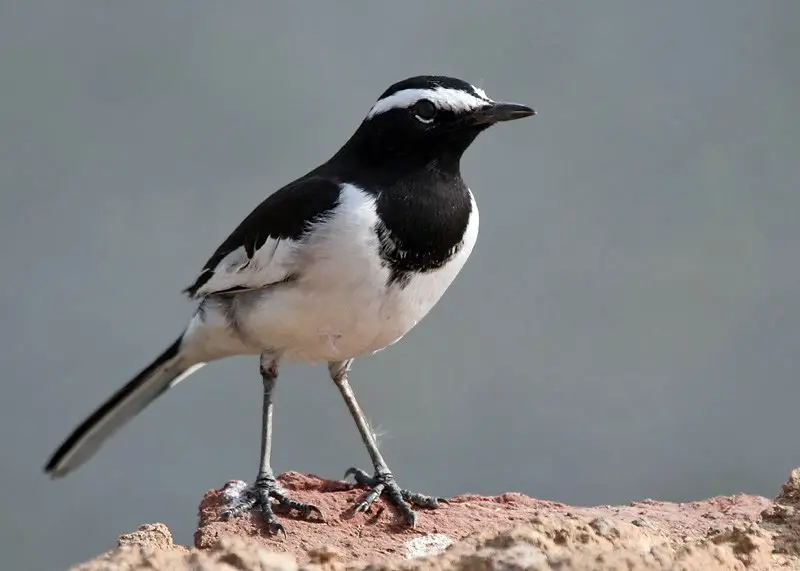
Motacillidae is a family of small passerine birds consisting of around 70 species. They are found across Europe, Africa, Asia and even Alaska with two migratory breeding species.
The three genera they belong to include wagtails which typically have medium to long tails; longclaws that can only be spotted in the Afrotropics; and pipits which possess the most cosmopolitan distribution worldwide.
These birds feed on insects as well as seeds for their diets and are usually seen in open habitats such grasslands or wetlands where food sources like invertebrates can easily be accessed.
Most Motacillidae species also use mud nests during breeding season making them easy targets for predators so it’s important we protect these beautiful creatures.
Scientific classification:
| Kingdom | Animalia |
| Phylum | Chordata |
| Class | Aves |
| Order | Passeriformes |
| Superfamily | Passeroidea |
| Family | Motacillidae Horsfield, 1821 |
43. Northern Storm Petrels
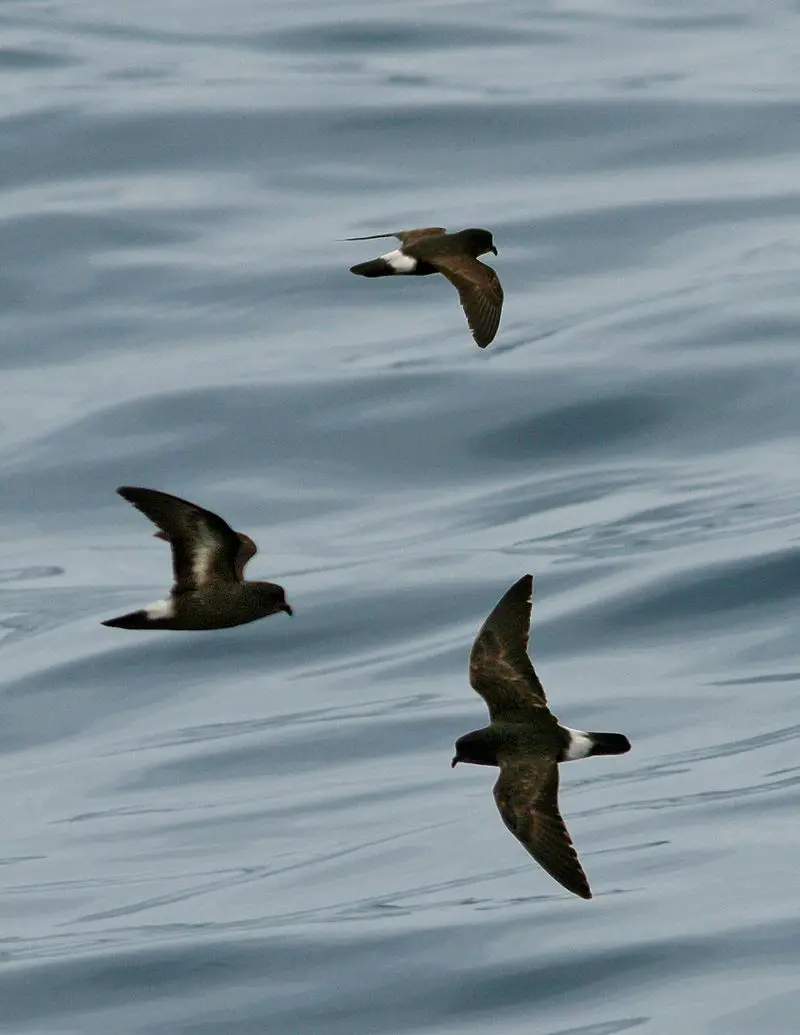
Northern storm petrels are one of the smallest seabirds, inhabiting oceans all over the world.
They have a unique ability to hover over water and pick planktonic crustaceans and small fish from the surface.
Northern storm petrels belong to the genus Hydrobates in family Hydrobatidae, part of Procellariiformes order.
This species was once lumped with austral storm petrel but recent studies show that they weren’t related closely which led them being split into two distinct species now.
These birds can be identified by their dark grey upperparts and wings along with white underparts when seen from afar while feeding on ocean’s surface.
Scientific classification:
| Kingdom | Animalia |
| Phylum | Chordata |
| Class | Aves |
| Order | Procellariiformes |
| Family | Hydrobatidae Mathews, 1912 |
| Genus | Hydrobates F. Boie, 1822 |
44. Procellariidae
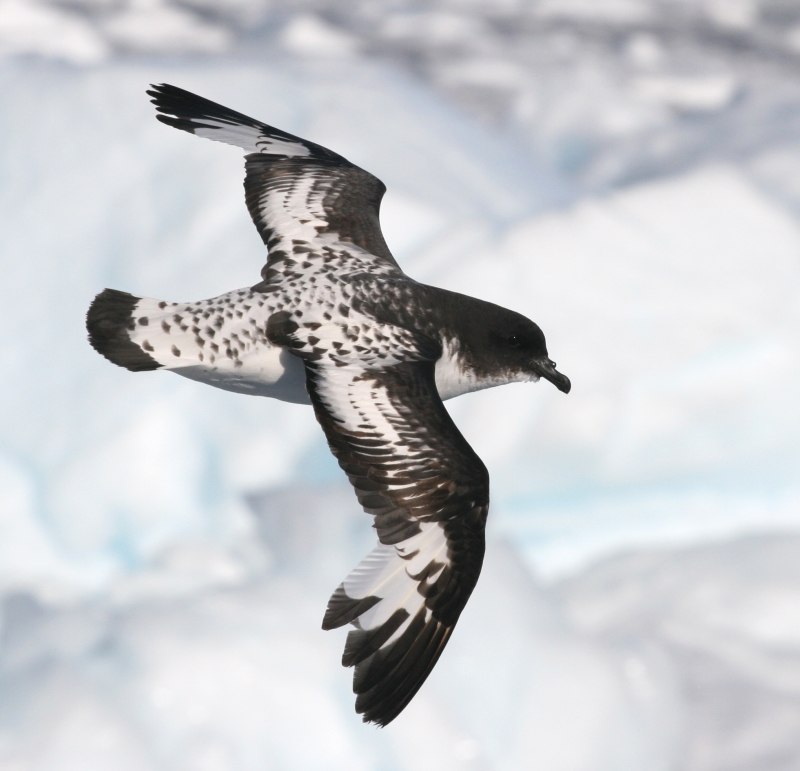
Procellariidae is a diverse family of seabirds belonging to the bird order Procellariiformes.
These birds are commonly referred to as tubenoses and include fulmarine petrels, gadfly petrels, diving petrels, prions, and shearwaters.
They range in size from the small storm-petrel which measures around 18cm long to the giant albatross which can reach up to 3 meters in length.
Generally found near oceans or coasts where they feed on fish as well as squid and other marine life depending on species.
Many procellariids will also nest inland during breeding season before returning back out at sea for most of their lives.
Their wings have specially adapted feathers that give them incredible gliding abilities allowing them literally fly with minimal effort over vast distances across oceanic regions
Scientific classification:
| Kingdom | Animalia |
| Phylum | Chordata |
| Class | Aves |
| Order | Procellariiformes |
| Family | Procellariidae Leach, 1820 |
45. New World Quail
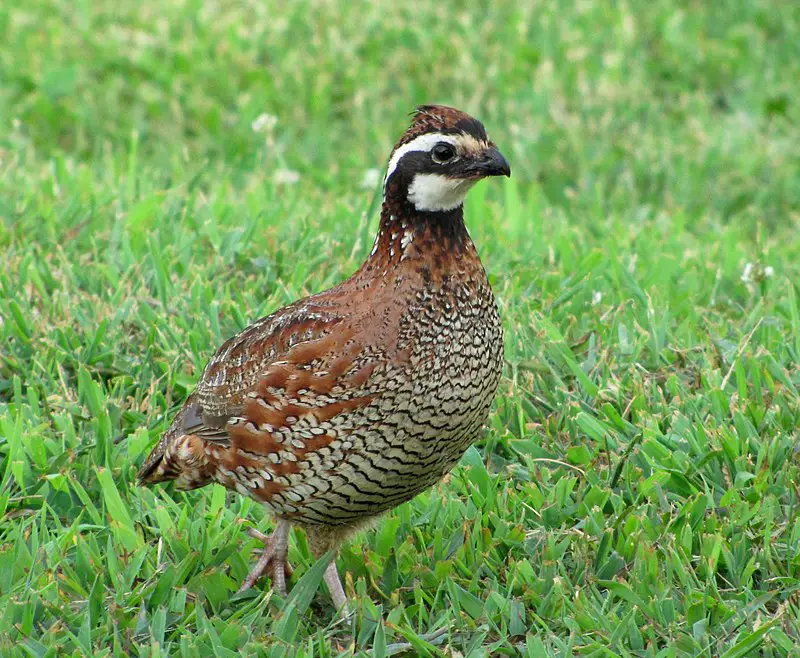
New World quail are small birds found in the Americas, from Canada to Brazil. They belong to their own family, Odontophoridae, and have similar appearance and habits as Old World quail which belong to a different family.
New World Quails come in various species such as California Quail and Bobwhite Quail.
These birds have adapted well to human presence due to availability of food resources like agricultural crops.
They also live close together where they form large flocks for safety against predators like foxes or hawks.
The males usually sport colorful feathers during mating season that helps them attract female mates while providing an amazing sight for us viewers.
Scientific classification:
| Kingdom | Animalia |
| Phylum | Chordata |
| Class | Aves |
| Order | Galliformes |
| Superfamily | Phasianoidea |
| Family | Odontophoridae Gould, 1844 |
46. Plovers

Plovers are a family of around 64-68 species of ground-dwelling birds, commonly found in open country such as fields, meadows and tundras.
They have short bills with webbed feet to help them forage through mud or shallow water.
Plover plumage is usually mottled brown though some species may have brighter colors on the head and wings.
These birds feed mainly on insects but can also eat small crustaceans and worms.
Plovers breed during springtime when they dig holes in sandy or pebbled beaches to lay their eggs which hatch after about 3 weeks incubation period.
They use distraction display behaviour by pretending an injury to the predators away from their nests if needed for protecting their young ones.
Scientific classification:
| Kingdom | Animalia |
| Phylum | Chordata |
| Class | Aves |
| Order | Charadriiformes |
| Family | Charadriidae Leach, 1820 |
47. Gnatcatcher
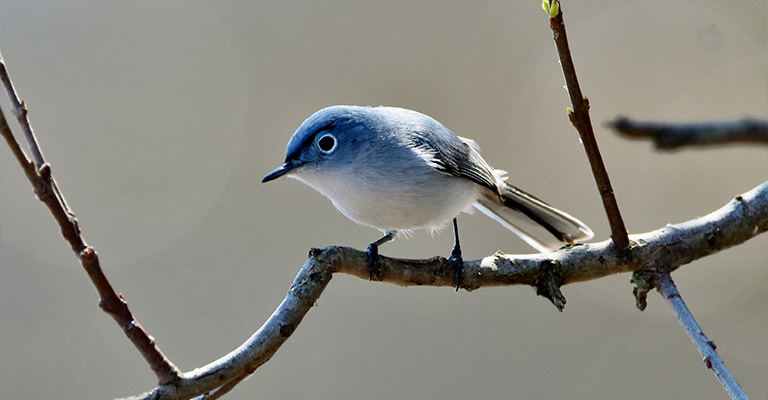
Gnatcatchers are small passerine birds from the family Polioptilidae. They inhabit North and South America, apart from far south regions and high Andean areas.
Most species of this mostly tropical and subtropical group remain in one area year-round; however, the blue-grey gnatcatcher of U.S.A and Canada migrate to warmer climates during wintertime.
Gnatcatchers share a close relation with wrens.[1] The size varies between 5–7 inches long depending on specie, they typically have dark upperparts while their underparts range in color: white or greyish shades may predominate but some species show yellow tinting too.
Their diet consists mainly insects which is usually captured by short sallies above vegetation level when foraging for food.
Scientific classification:
| Kingdom | Animalia |
| Phylum | Chordata |
| Class | Aves |
| Order | Passeriformes |
| Superfamily | Certhioidea |
| Family | Polioptilidae Baird, 1858 |
48. Double-Striped Thick-Knee
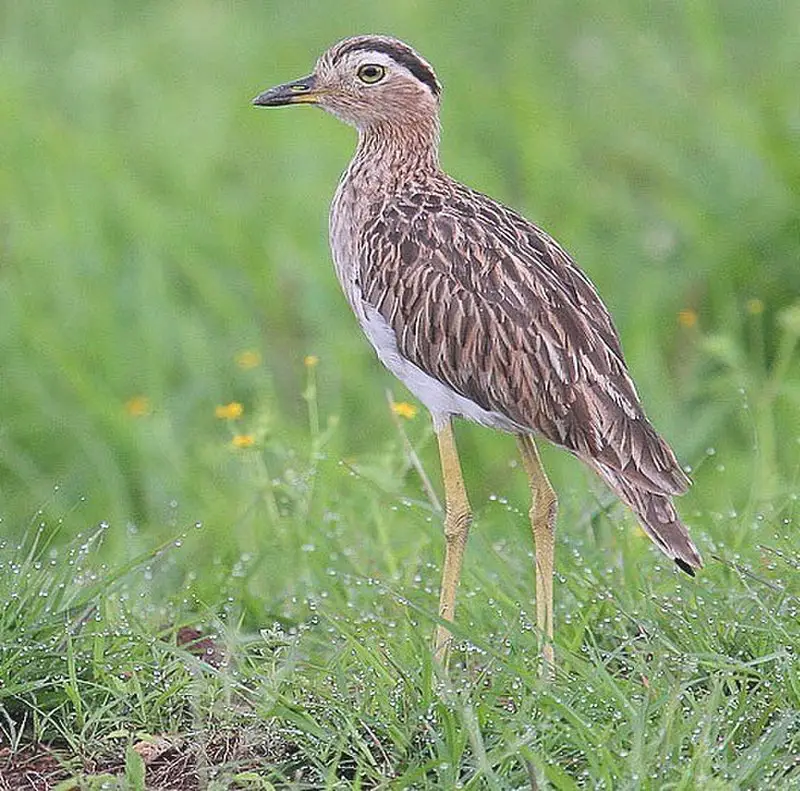
The double-striped thick-knee is a species of stone curlew, belonging to the family Burhinidae. It has long legs with prominent joints and two stripes on its head pattern that give it its name ‘bistriatus’.
This bird was first described in 1829 by Johann Georg Wagler from a specimen found in Mexico.
Its plumage varies between shades of grey and brown depending on the season, allowing for camouflage when perching or nesting amongst rocks or shrubs.
Double striped thick knees are usually seen alone or in pairs but during breeding season they may gather together into small flocks.
They feed mainly on insects such as locusts, crickets and grasshoppers which they catch using their strong beak after running around like chickens.
Scientific classification:
| Kingdom | Animalia |
| Phylum | Chordata |
| Class | Aves |
| Order | Charadriiformes |
| Family | Burhinidae |
| Genus | Burhinus |
| Species | B. bistriatus |
49. Hispaniolan Pewee
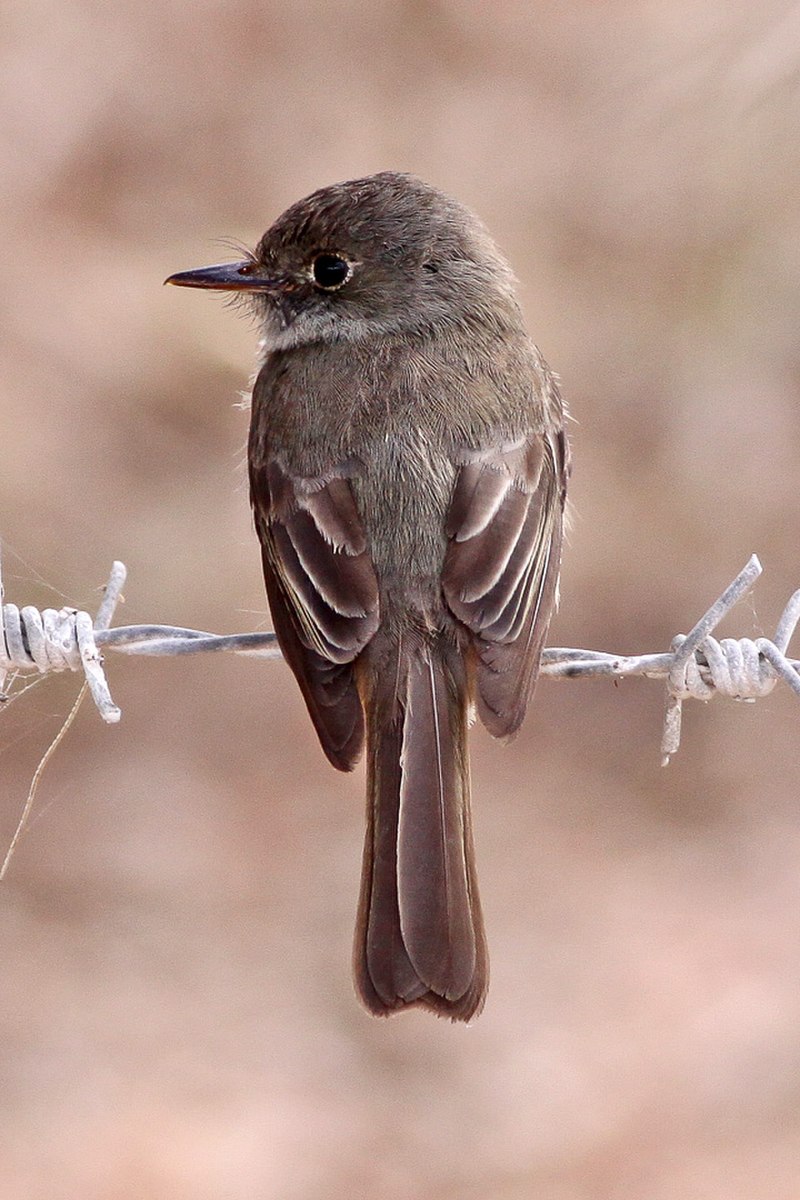
The Hispaniolan pewee is a species of flycatcher found exclusively on the Caribbean island of Hispaniola. It has greyish-brown upperparts and whitish underparts with yellow wing bars, making it easily identifiable in its native habitat.
Its call consists of loud squeaks and high whistles which can often be heard during daytime hours.
As an endemic bird to this island, it plays an important role in maintaining the ecological balance by controlling insects such as mosquitoes and beetles that could damage crops or cause discomfort for humans nearby.
The main threats to their populations are deforestation due to agricultural expansion into natural habitats, climate change, loss of food sources from insecticides used around farms and competition from other nonnative birds entering their range.
Conservation efforts must focus on protecting remaining forests while also promoting sustainable agriculture practices so both people and wildlife may continue coexisting harmoniously together within these tropical landscapes.
Scientific classification:
| Kingdom | Animalia |
| Phylum | Chordata |
| Class | Aves |
| Order | Passeriformes |
| Family | Tyrannidae |
| Genus | Contopus |
| Species | C. hispaniolensis |
50. Vervain Hummingbird
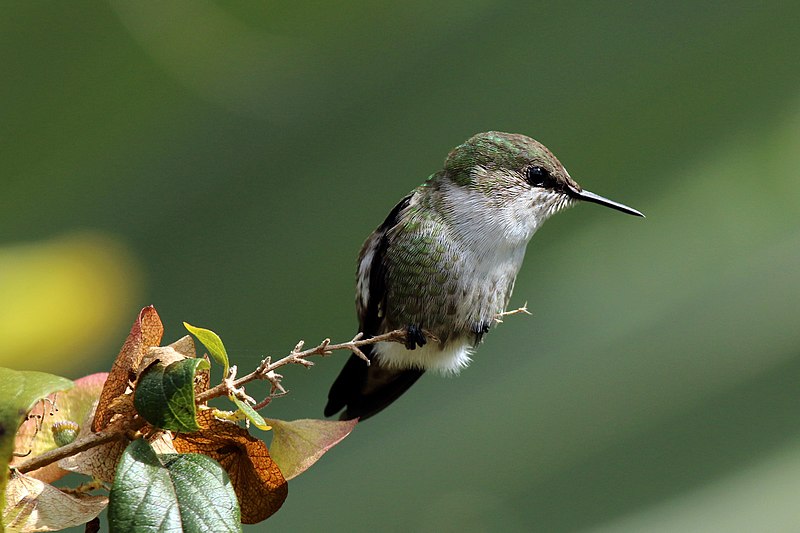
The Vervain Hummingbird is a species of hummingbird belonging to the Mellisugini tribe in the Trochilinae subfamily. It can be found on Hispaniola and Jamaica, where it inhabits humid forests at elevations up to 2200m above sea level.
This tiny bird has an overall length of 3-4 inches with iridescent feathers that range from greenish bronze to bluish purple in color depending on light angle.
Its wings are short and narrow for quick maneuvering through densely vegetated areas, while its long bill allows them to feed nectar efficiently from tubular flowers such as Penstemon or columbine.
These birds also hunt small insects around foliage during their search for food sources year round, making them important pollinators within their native habitats.
Scientific classification:
| Kingdom | Animalia |
| Phylum | Chordata |
| Class | Aves |
| Order | Apodiformes |
| Family | Trochilidae |
| Genus | Mellisuga |
| Species | M. minima |